Georgia is a country rich in natural beauty and cultural heritage. One of the regions where this is most apparent is Svaneti, the most mountainous and isolated region in the country. Situated on the southern slopes of the central Caucasus Mountains, Svaneti is surrounded by peaks rising over 5,000 metres above sea level, including Mount Shkara (5.201 m.), which is the highest mountain in Georgia. The region is also notable for its vast forests, alpine meadows and glaciers.
Svaneti was my ultimate dream destination within Georgia, and in particular the four-day trek between the town of Mestia and the village of Ushguli. This part of the region is known as Upper Svaneti, separated from Lower Svaneti by the Svaneti Range which rises almost as high as the main Caucasus range. Upper Svaneti is the highest inhabited area in the Caucasus, and it was long cut-off from the rest of Georgia, and is said to have only been reachable in the summer via a difficult footpath as late as the mid-19th century. Thus, its native inhabitants, the Svan people, who are an ethnic subgroup of Georgians, have naturally been isolated. For this reason, Svaneti differs greatly historically, culturally and linguistically from the rest of the country.
Today, Upper Svaneti is still challenging and time-consuming to reach, although it has been connected to the rest of the country since 1934 via a steep and winding road from the city of Zugdidi. It was this road, known as the Zugdidi-Jvari-Mestia-Lasdili Highway, that my travel buddy and I travelled along to reach Upper Svaneti back in September 2021!
We spent a few hours in Zugdidi beforehand, but there is not much to see in the city. It’s rather ugly, but has great restaurants with delicious Georgian food, just like all other Georgian cities!
We shared a taxi with a couple from Belarus that we’d briefly met in Zugdidi, and then headed up into the mountains. The drive took around four hours with a food stop and several lookout stops along the way. The views only got better the further up we got. My travel buddy and I were dropped off in Nesguni, a small village three kilometres from Mestia, where we had booked our accommodation for the night.
We stayed in a beautiful guesthouse with a view to the mountains and the first of many Svan towers that we saw while in Svaneti. Svan towers are 9th-12th-century structures that are unique to the region. They were built for defensive purposes and are either free-standing or attached to residential houses, and they typically have 3-5 storeys. Many towers have been demolished in the past, but there are still several hundreds around Upper Svaneti. They are one of the main reasons that this region was inscribed on the UNESCO World Heritage List in 1996!
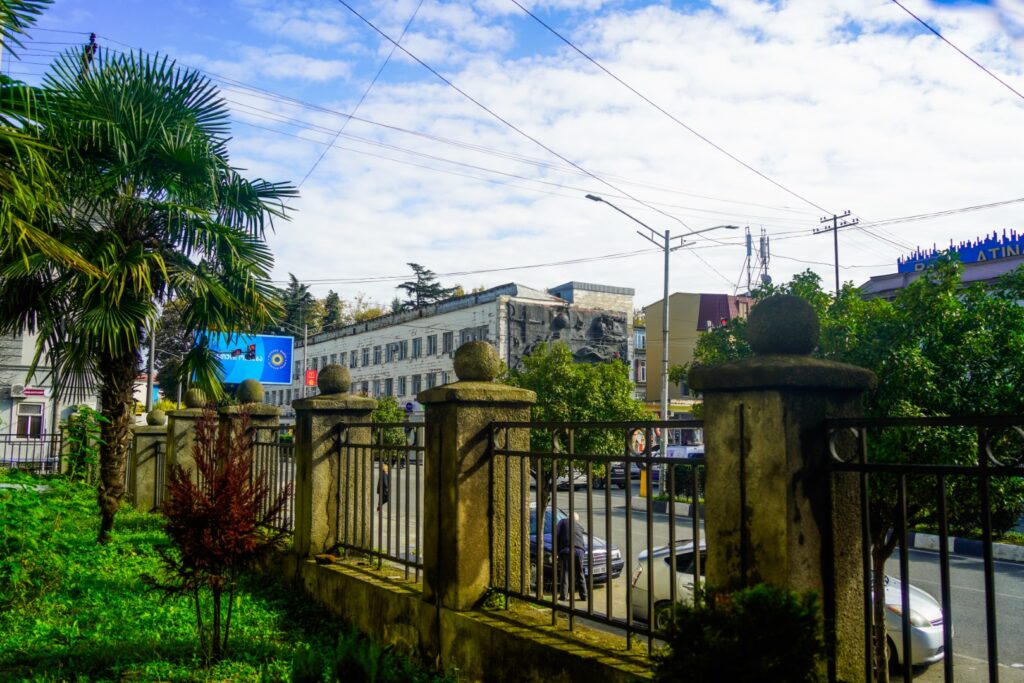
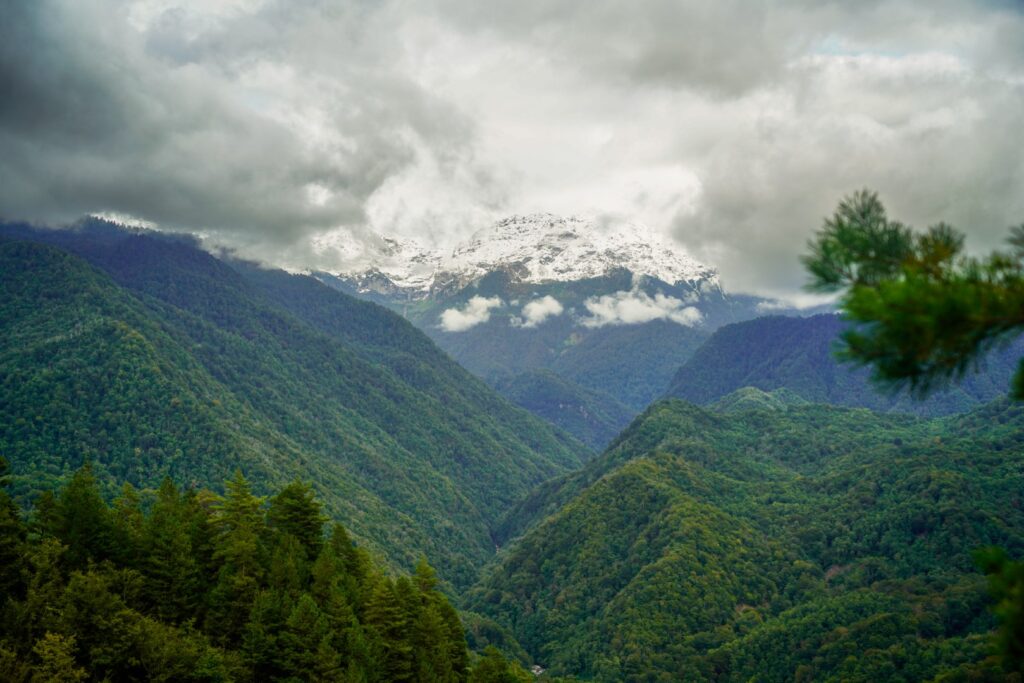
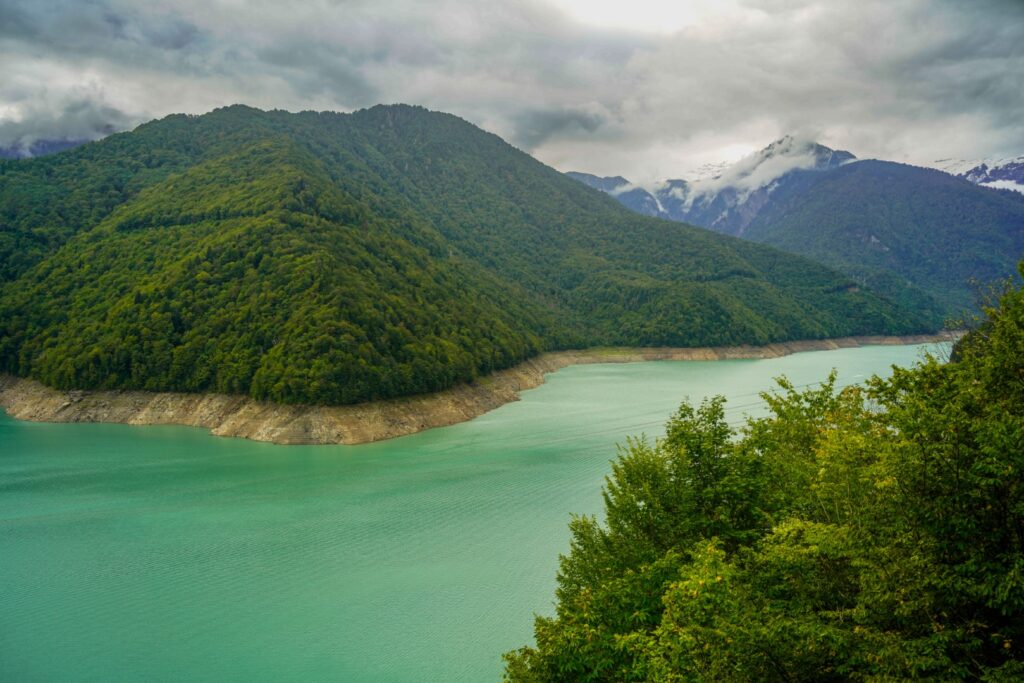
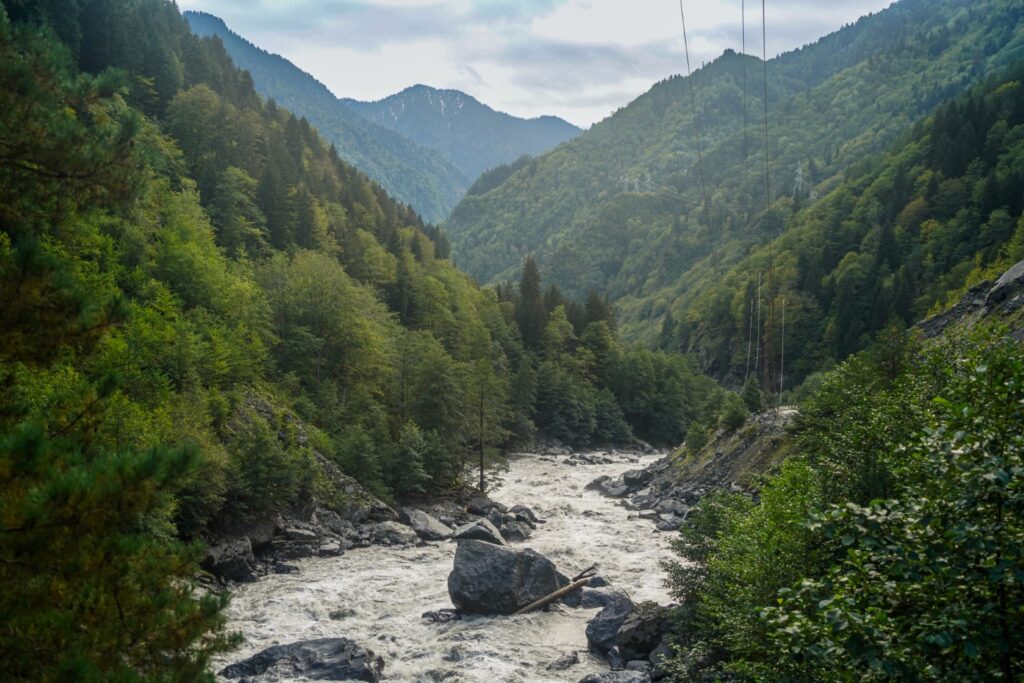

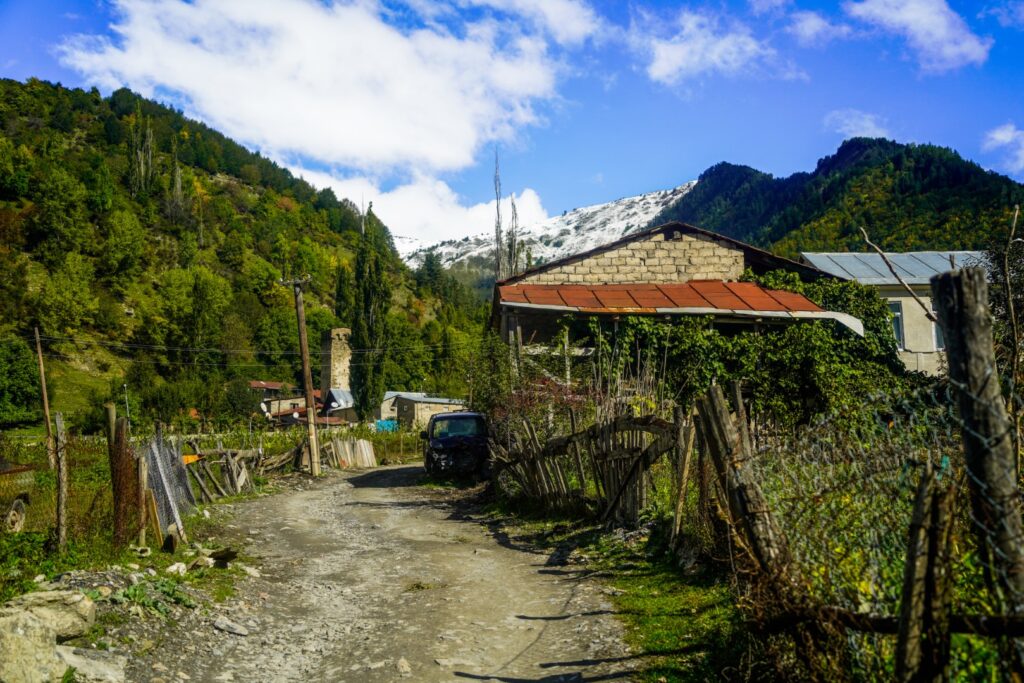
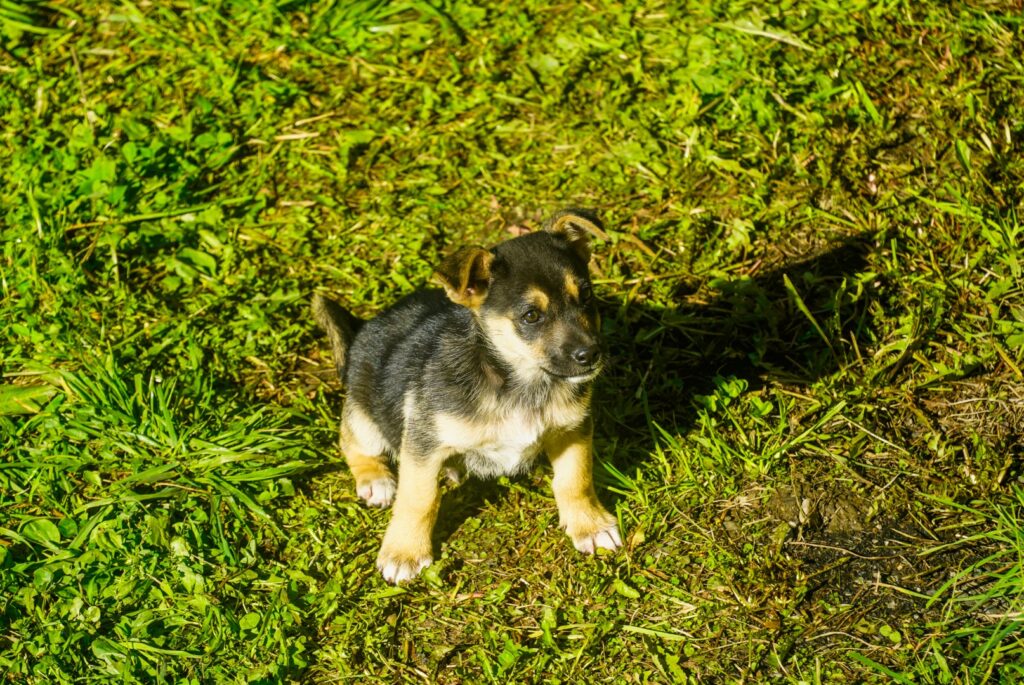
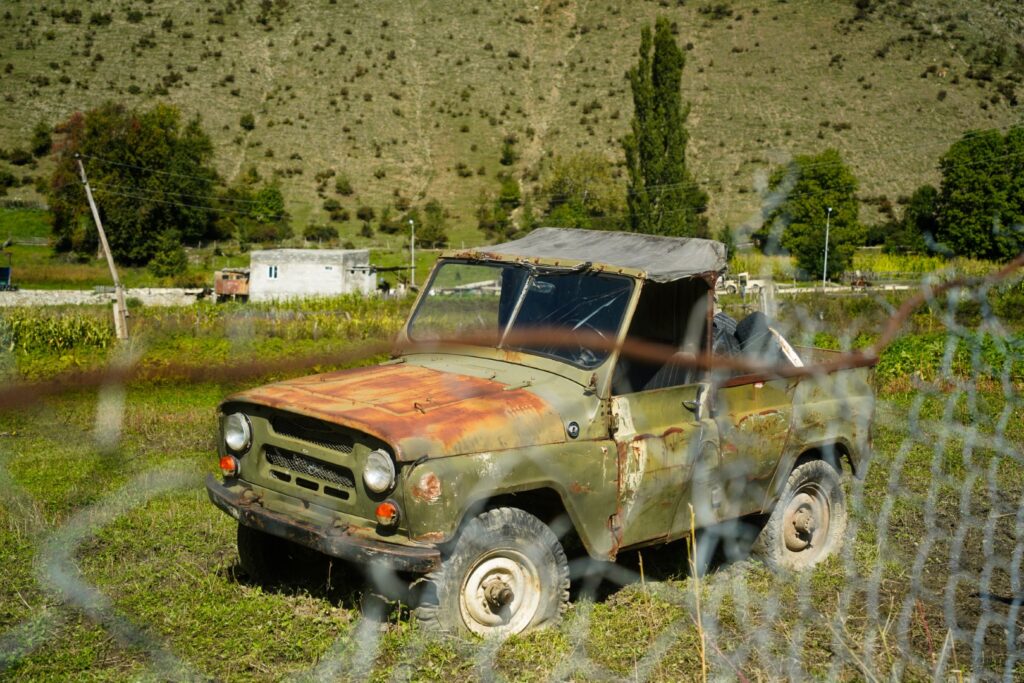
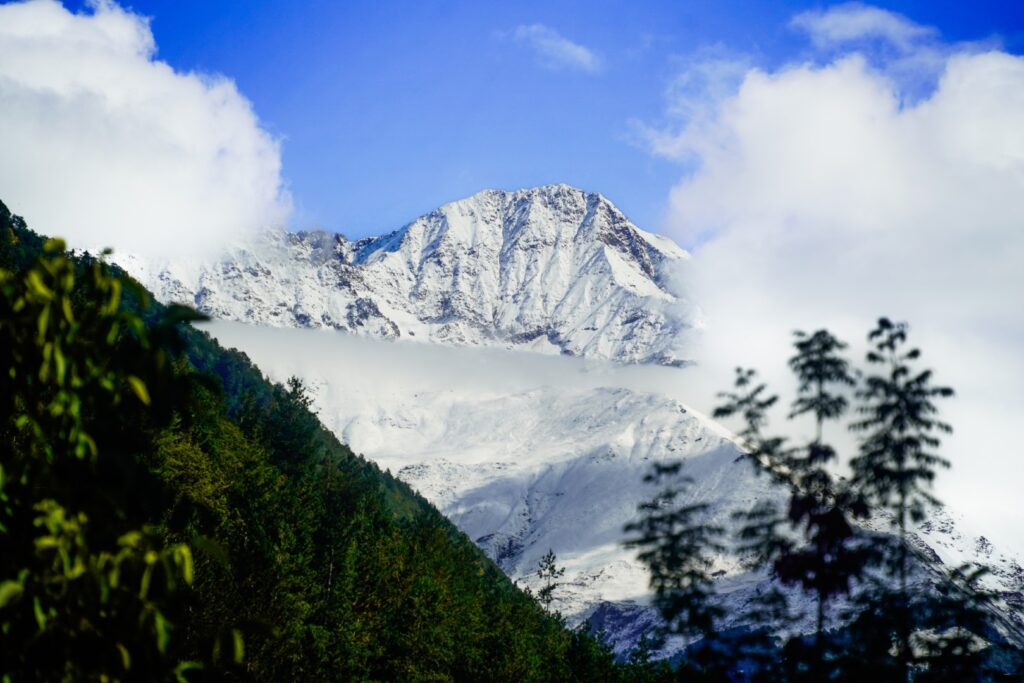
The following morning, we woke up to a blue sky. We packed our bags and walked into Mestia to experience a bit of “city life”, Svaneti style. While I had a work call for a project in Serbia, my travel buddy ordered an abundance of delicious Georgian food for us to enjoy in the sun!
When we were done with our feast, it was time for our first Svaneti hike! We caught a ride with a funicular and got off at the top, high above Mestia. There, we set off on a 1,5-hour hike at golden hour. We followed a trail through a pretty meadow until we reached a road, which we followed until we reached the Heshkili hamlet and found a new trail to a valley with the best echo I’ve ever heard. The landscape opened up and revealed snow-capped mountains behind lush green rolling hills dotted with little mountain huts and stone-built chapels, a scene that made me feel like I was back in the Austrian Alps.
Eventually, we came to a spot where a set of enormous swings had been set up. It felt very “instagrammy”, but I have to admit, there is nothing like swinging high above a landscape so beautiful.
As the sun bid farewell, we walked along a dirt road towards Mestia, until we were eventually picked up by a Polish couple who took us to our accommodation in town.
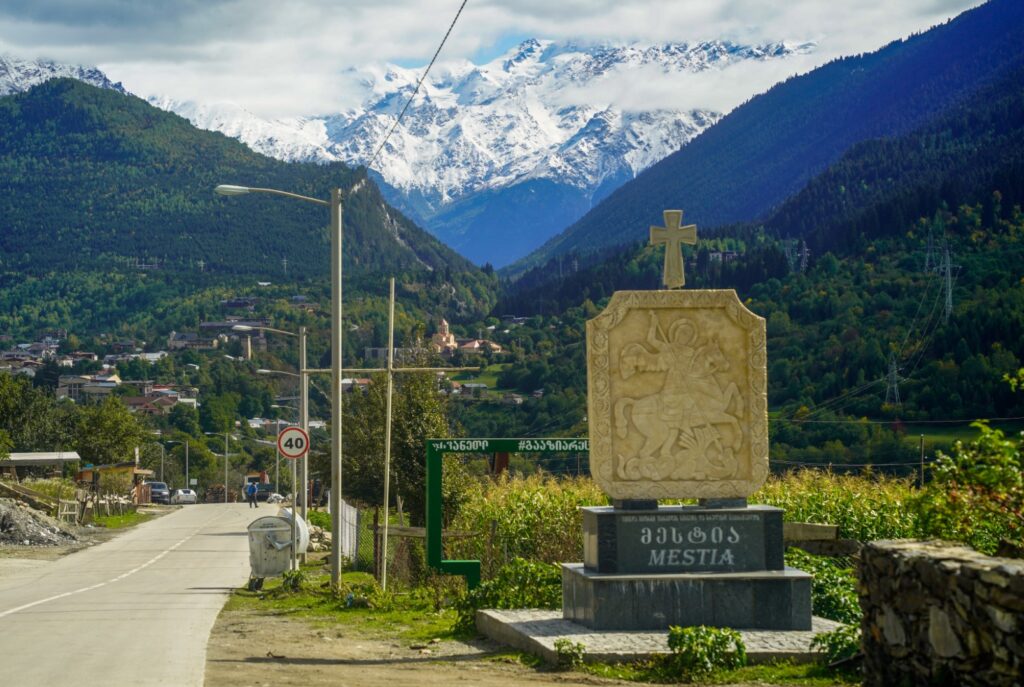
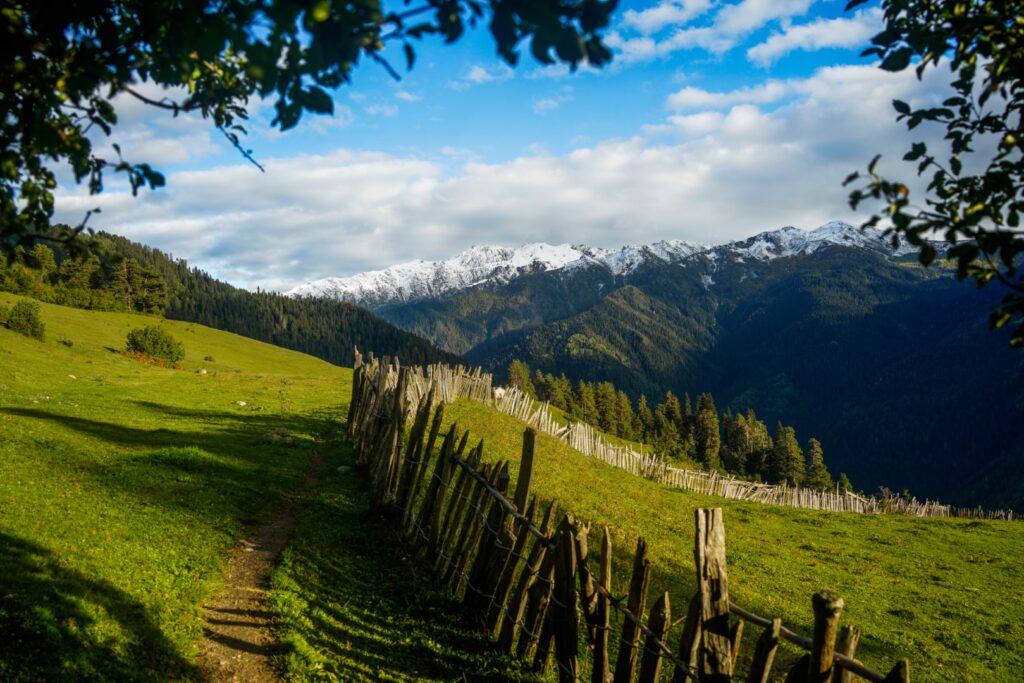
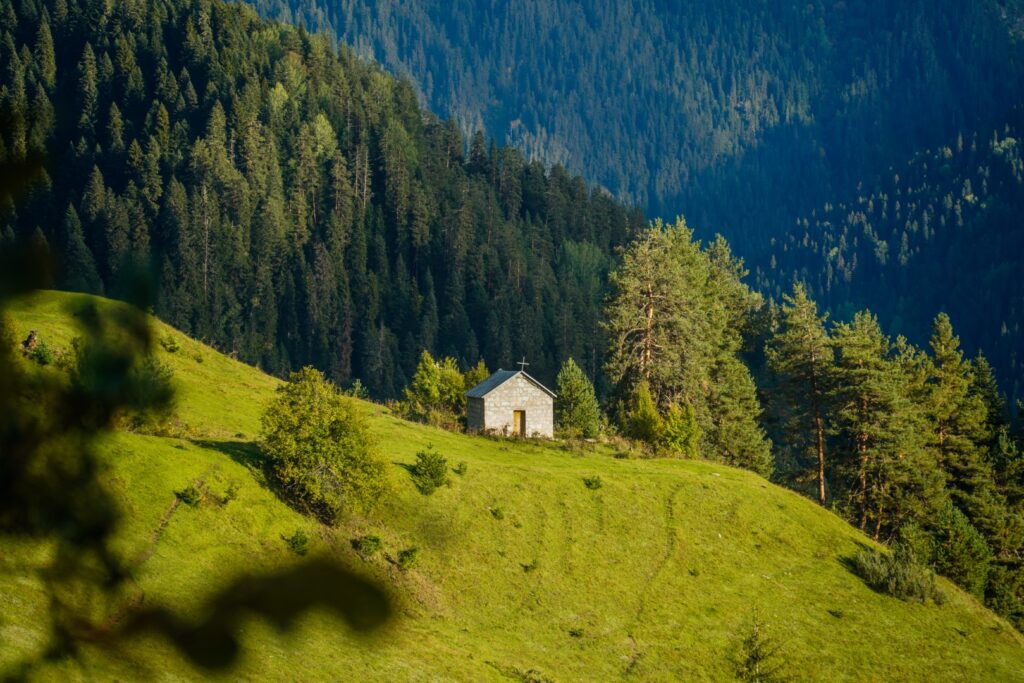
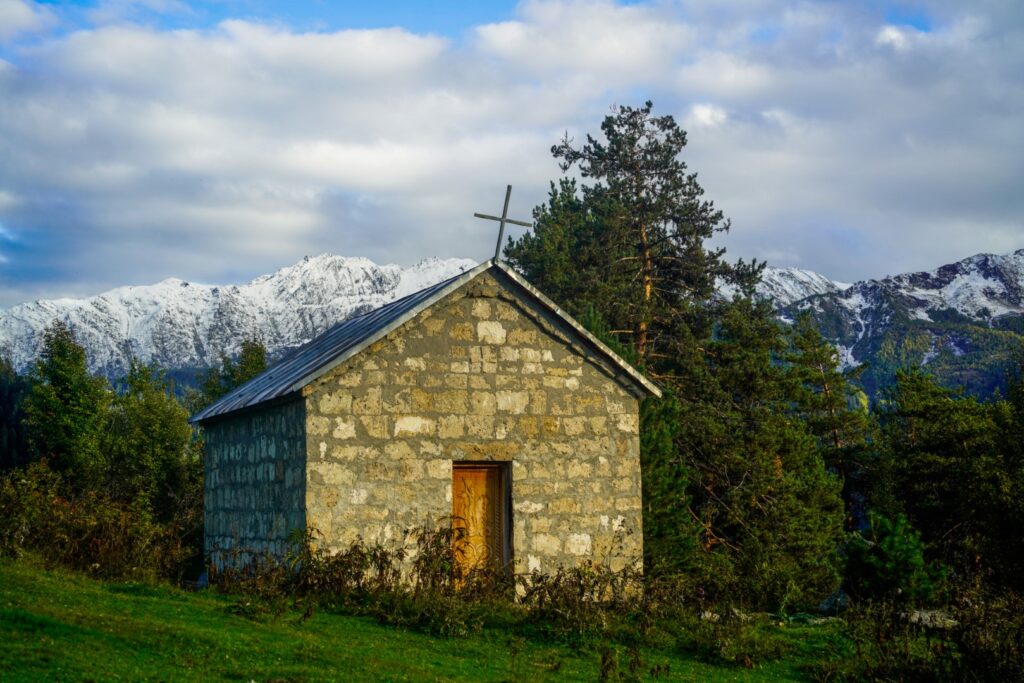
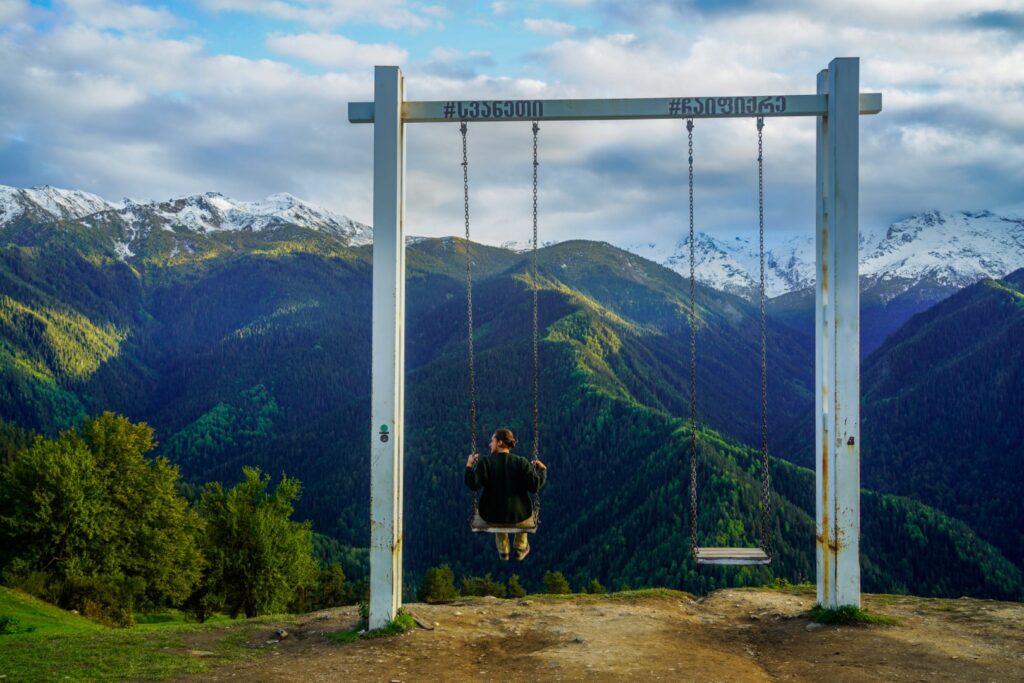
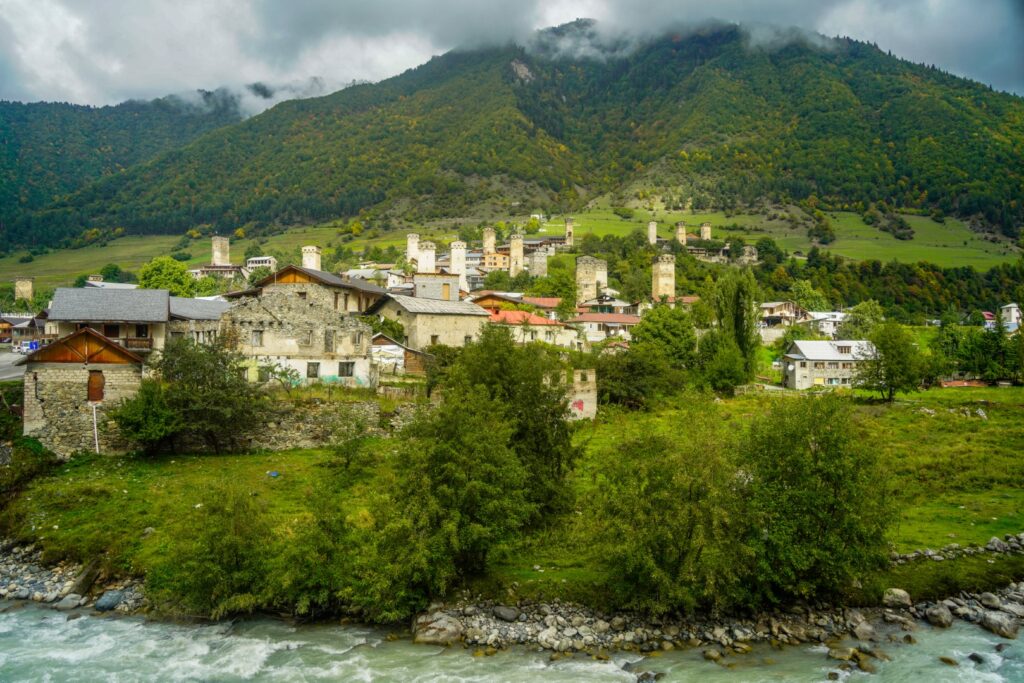
The following day, it was finally time to fulfill that dream of mine and begin the four-day 57-kilometre trek to Ushguli! This is by far the most popular multi-day trek in Georgia, and for good reason. The scenery is absolutely incredible throughout. For my travel buddy, this trip marked his first hiking experience, and I enjoyed witnessing a new passion evolve!
We set off late that day, at 11 AM, as the first leg of the trek is quite short at 16 kilometres with an ascent of just 763 metres and a descent of 523 metres. The trek passes through several traditional villages with Svan towers, and on the first day, we reached the first two of them. First up was Zhamushi, a very cute village with several towers, which we reached after some beautiful kilometres through open woodlands and green pastures complete with friendly cows. Further along, we ran into a hiker from the Czech Republic, who we ended up completing the trek with – and meeting again in Prague a year later!
We came by a small clear lake with mountain reflections, and the guys decided it was a perfect place for a swim. Not long after, shortly before sunset, we arrived in Zhabeshi, the end destination for the day. There, we searched for a guesthouse and settled for Guest House Victor, which was cozy and offered a delicious traditional dinner!
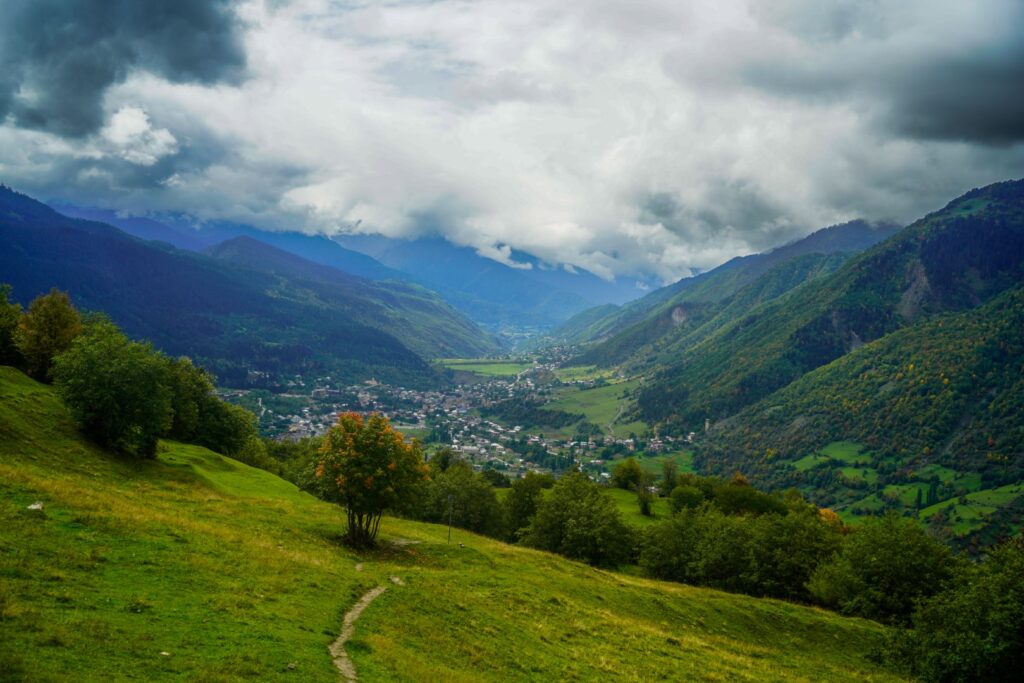
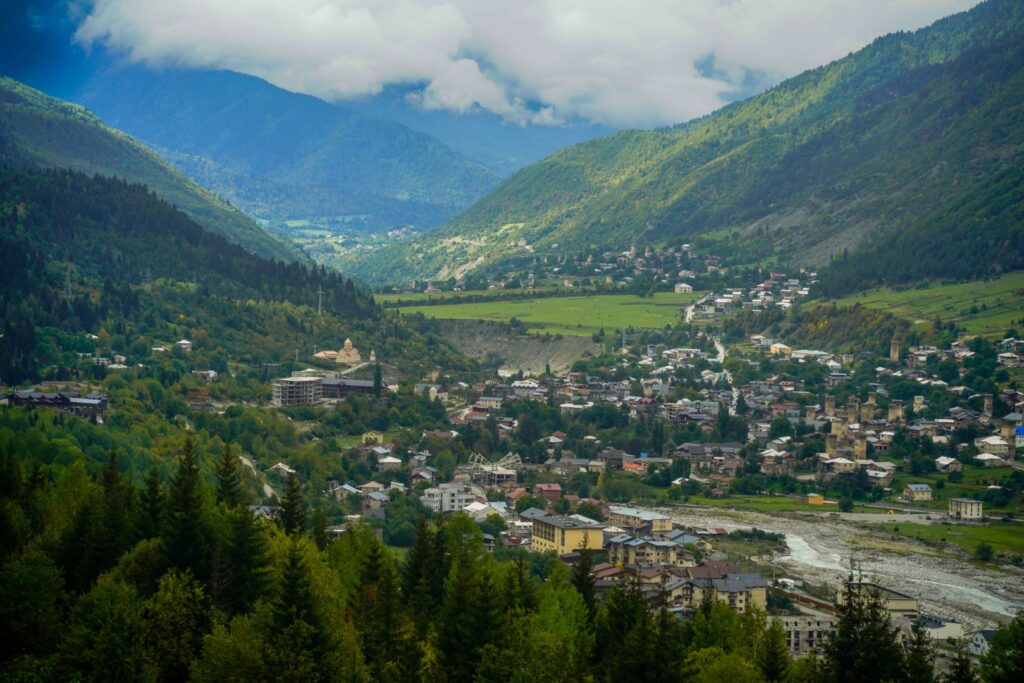
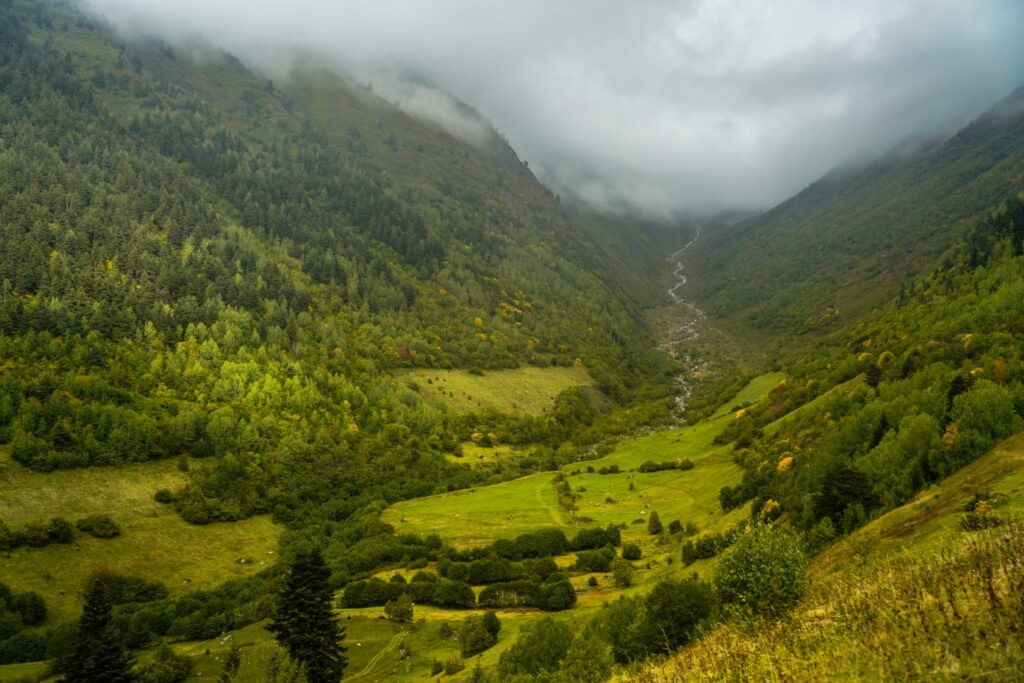
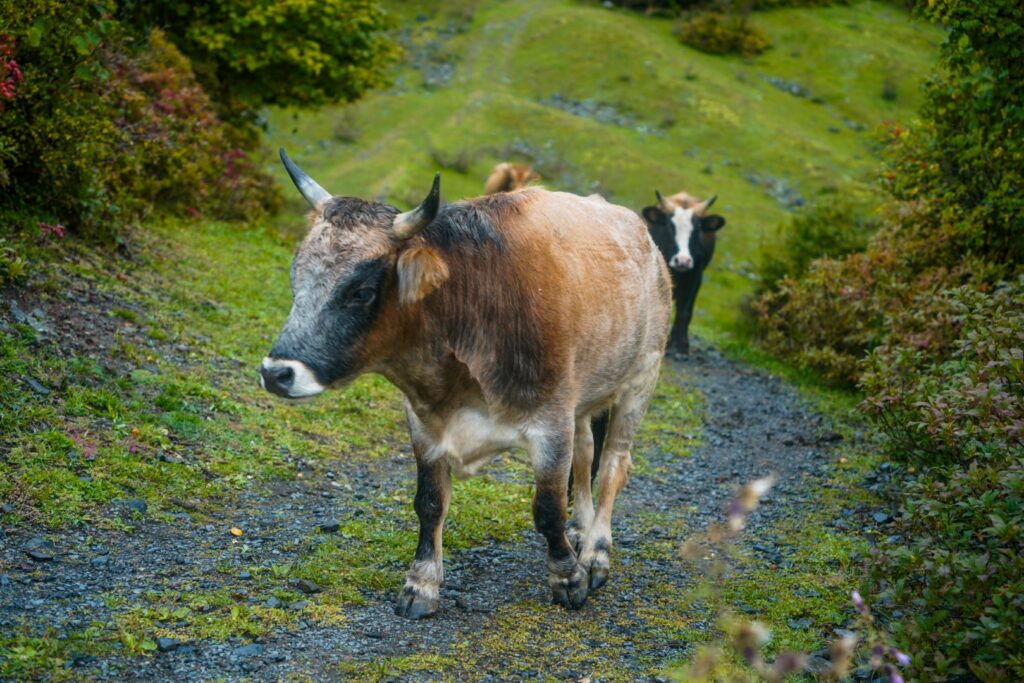
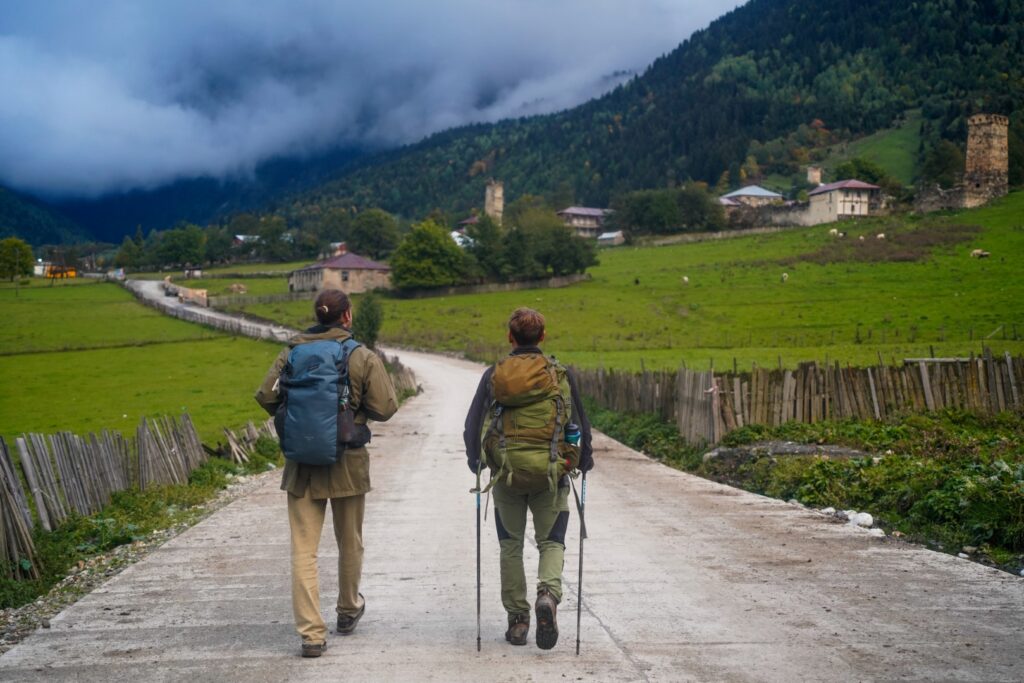
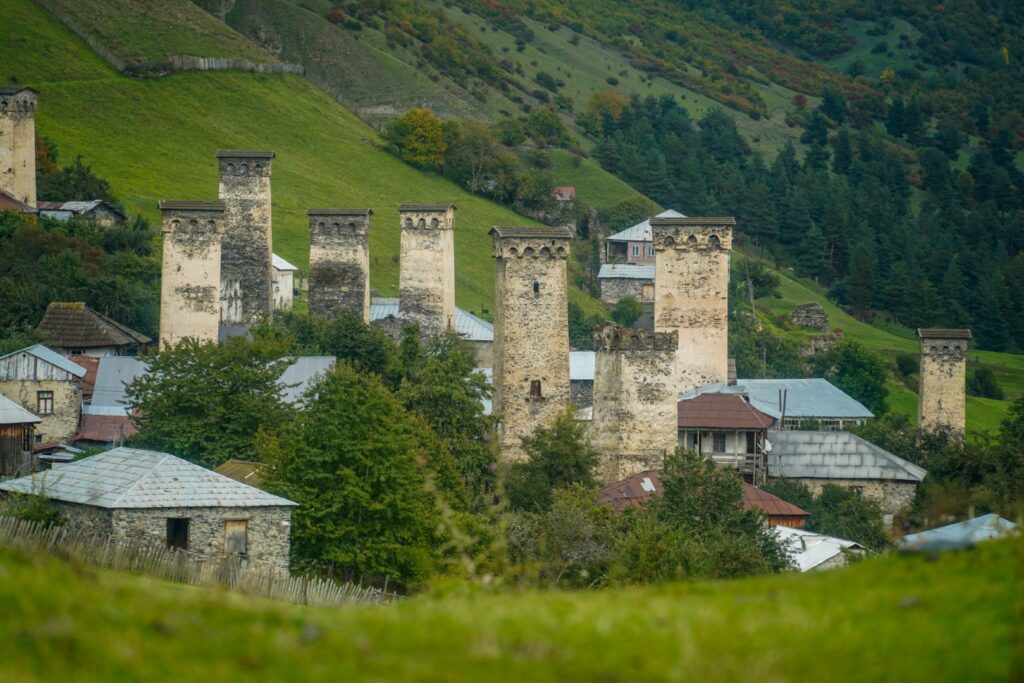
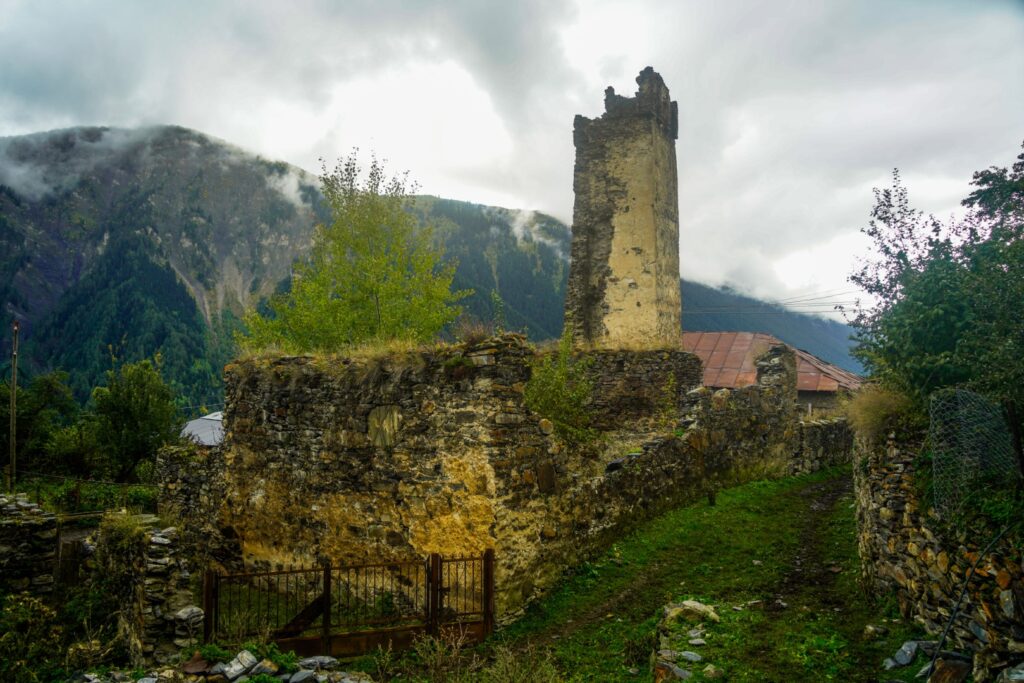
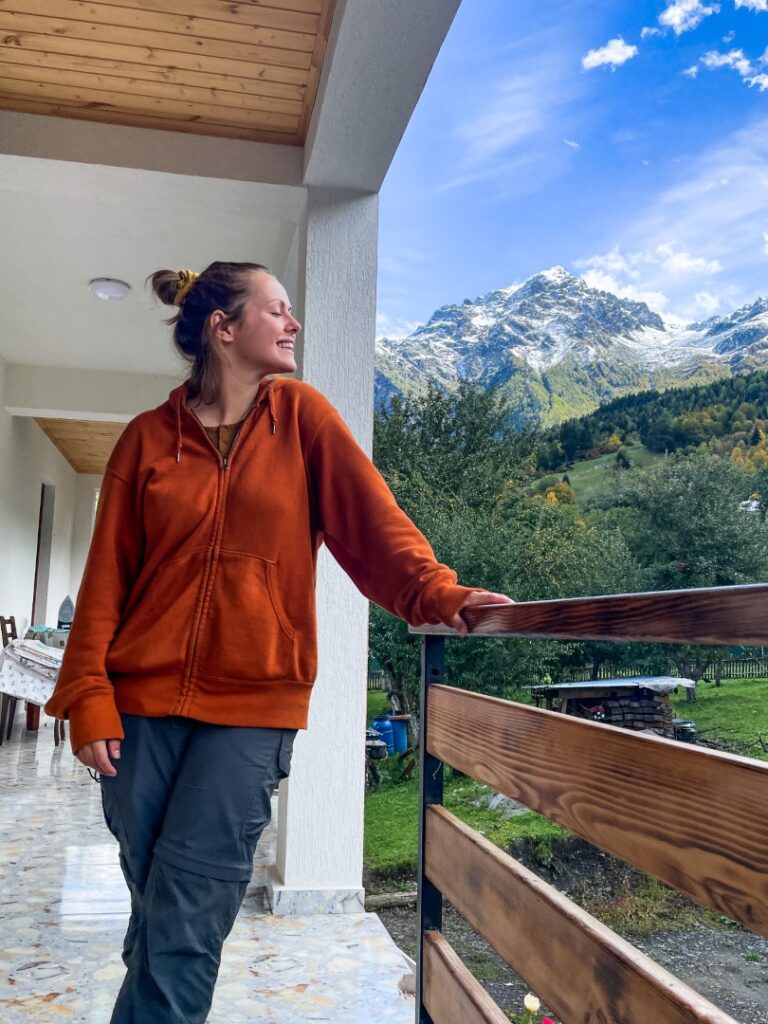
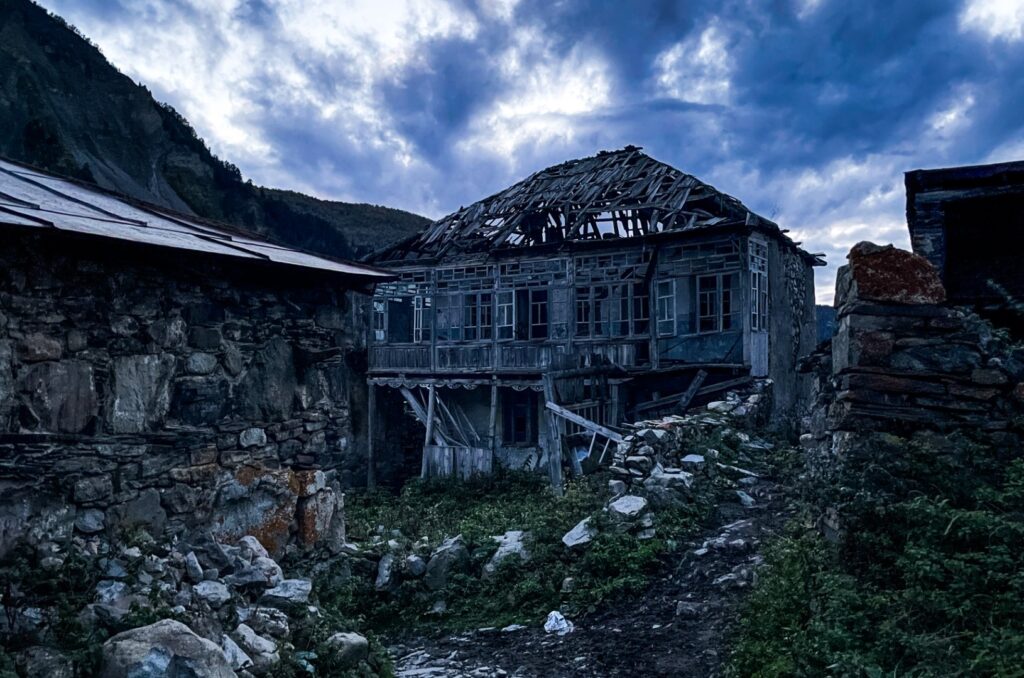
The second day of the trek is shorter than the first day, although more challenging. It’s only 11 kilometres long, but has an ascent of 909 metres and a descent of 527 metres. Despite this knowledge, we underestimated how long it would take us, and didn’t set off until midday. The weather was gorgeous, sunny and mild, and we were in for a treat – the landscapes on day two are arguably the prettiest on the entire trek!
The first part of the leg took us over a series of pastures until we reached a dense forest. That’s where the climbing began. For a couple of hours, we climbed and climbed, up through the autumnal forest, until we finally reached a dirt road belonging to the Tetnuldi ski resort. From there, there are two trails to Adishi; an easier lower trail and a slightly harder upper trail, which offers better views and less crowds. It was not a difficult decision to make.
We followed the upper trail, which traverses the base of the Tetnuldi mountain (4,858 m), and got us to the elevation of 2,751 metres. We soon reached the snow line, and the landscape opened up and revealed the spectacular views I’d been dying to see. I don’t know how to describe with words how beautiful Svaneti is, and particularly this part, so I will let the pictures below speak for themselves!
Eventually, we had to leave the views of my dreams behind as the trail went back into a forest. As sunset approached, we started the steep descent to the end destination of the day – my favourite village of the trek, Adishi, hidden below a slope in a little valley. We arrived just as dusk set in. That night, we joined a bunch of other hikers at Natia Guesthouse, and enjoyed a cozy evening, once again with the most delicious Georgian food. This is certainly not a trek where you go hungry!
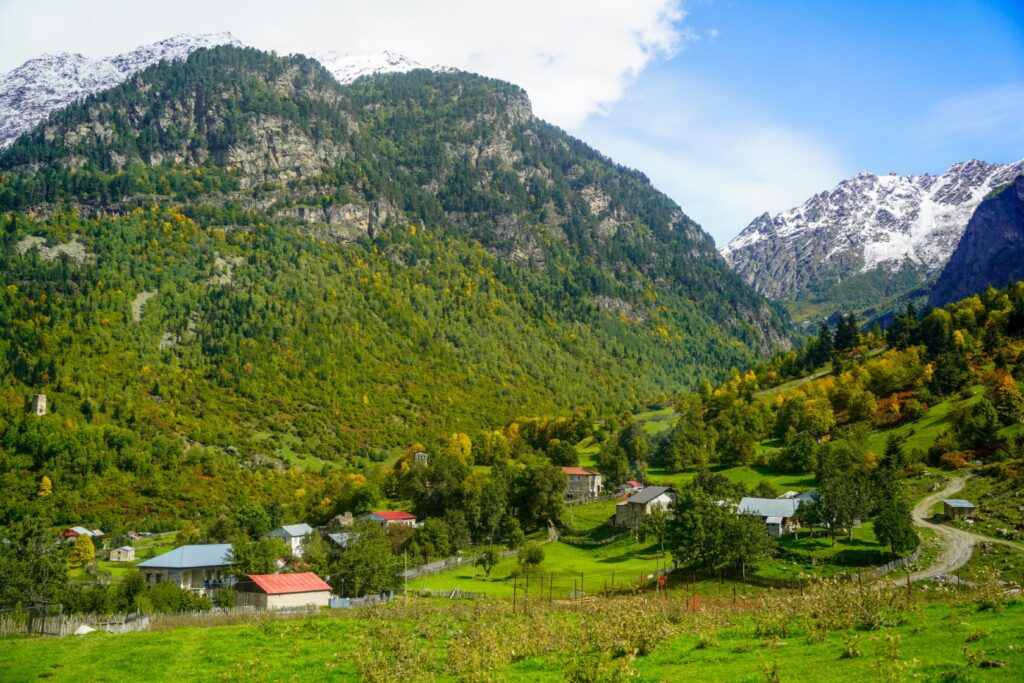
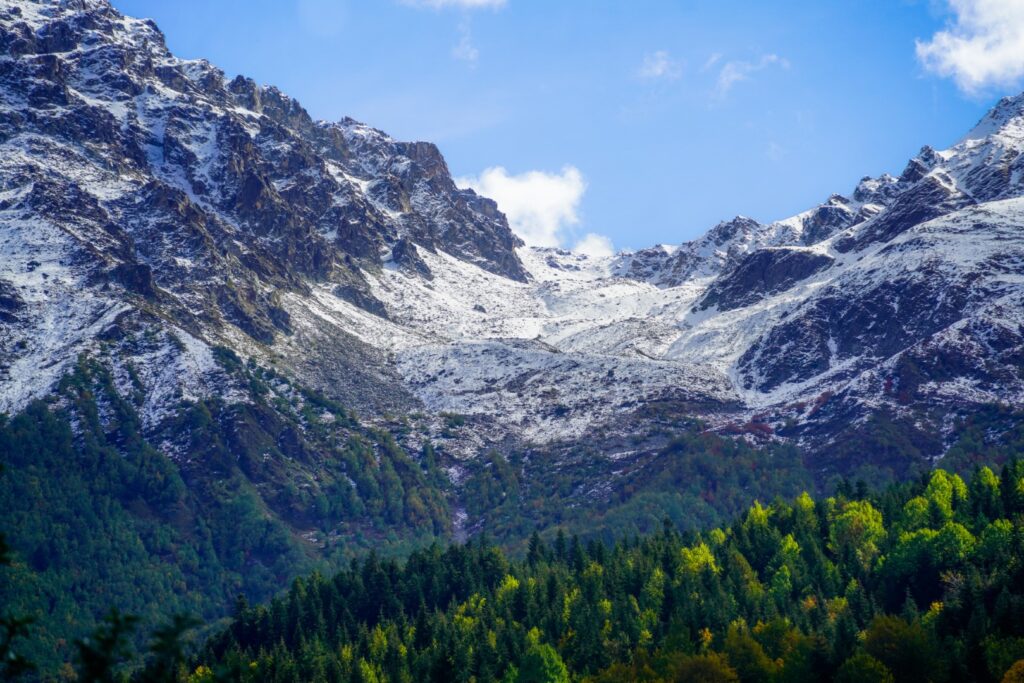

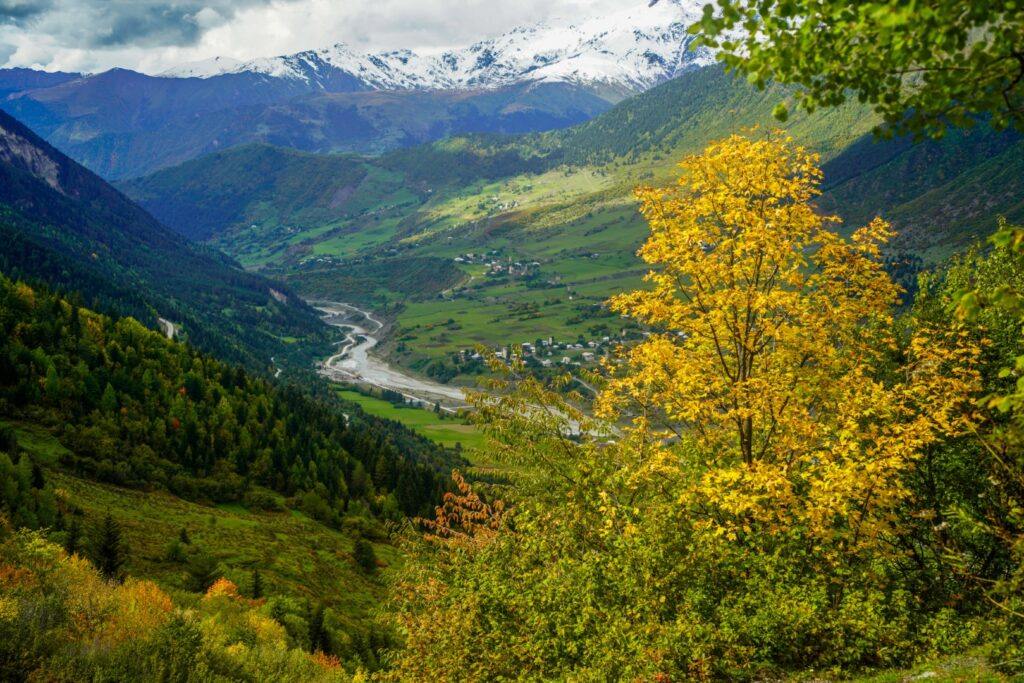
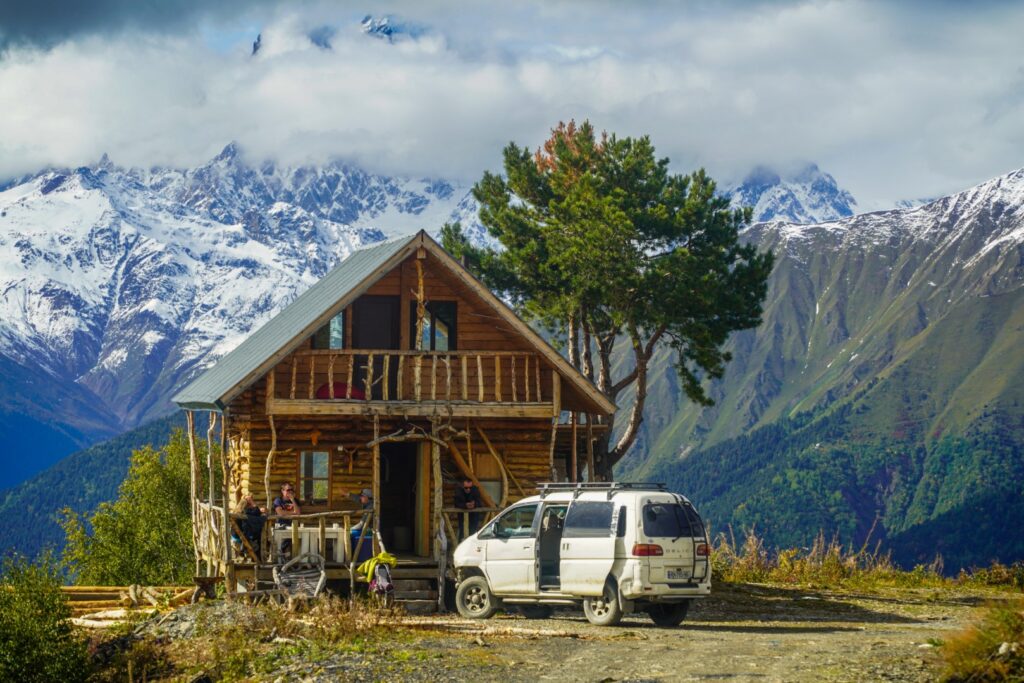
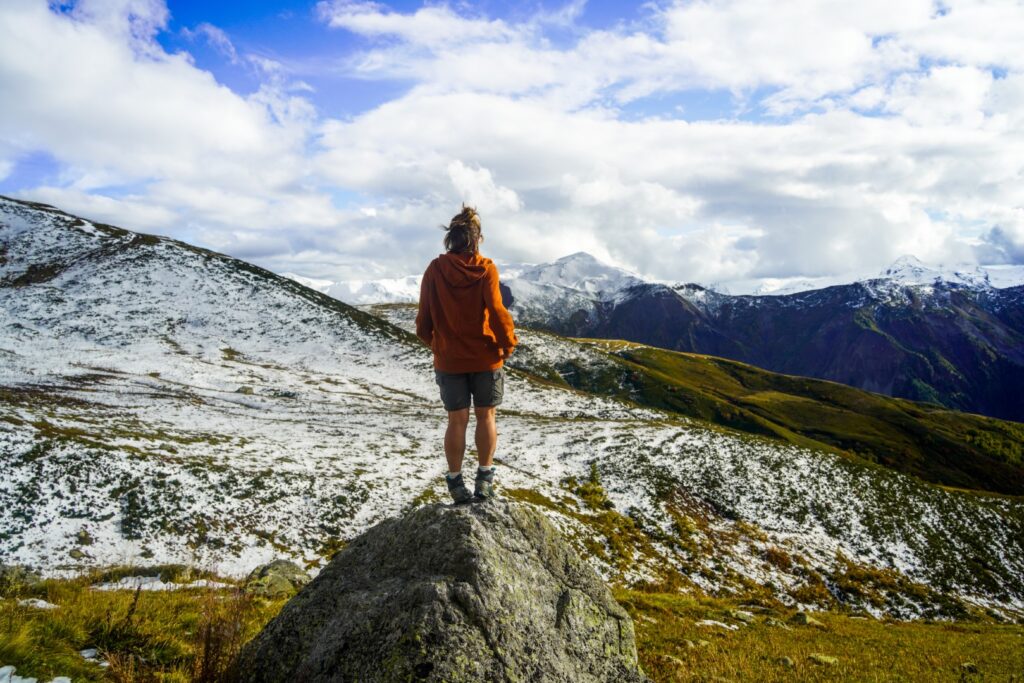
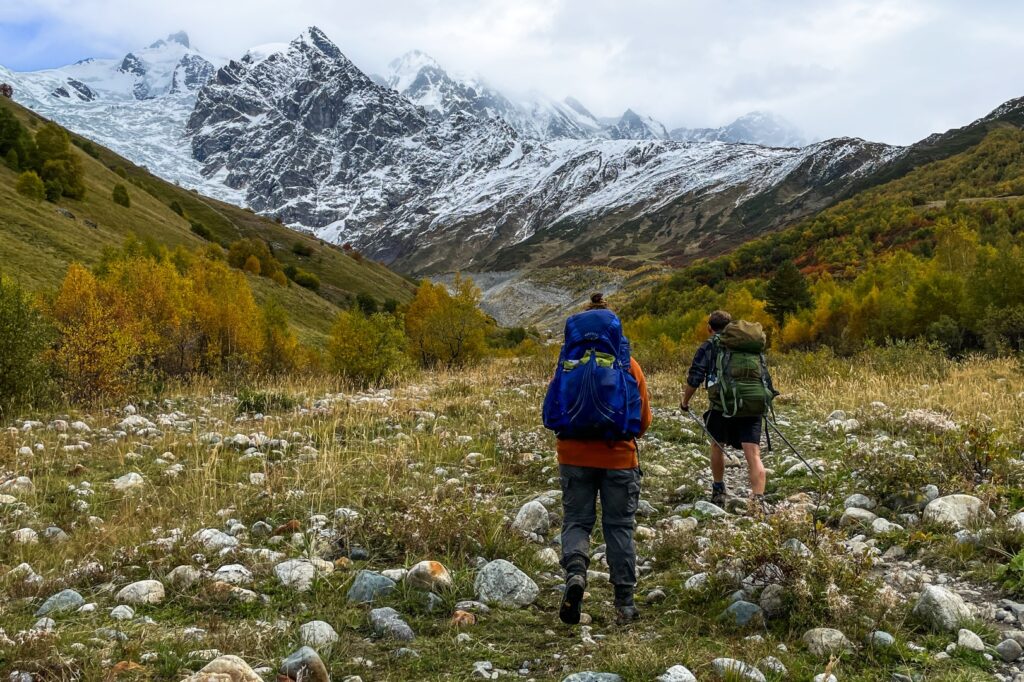
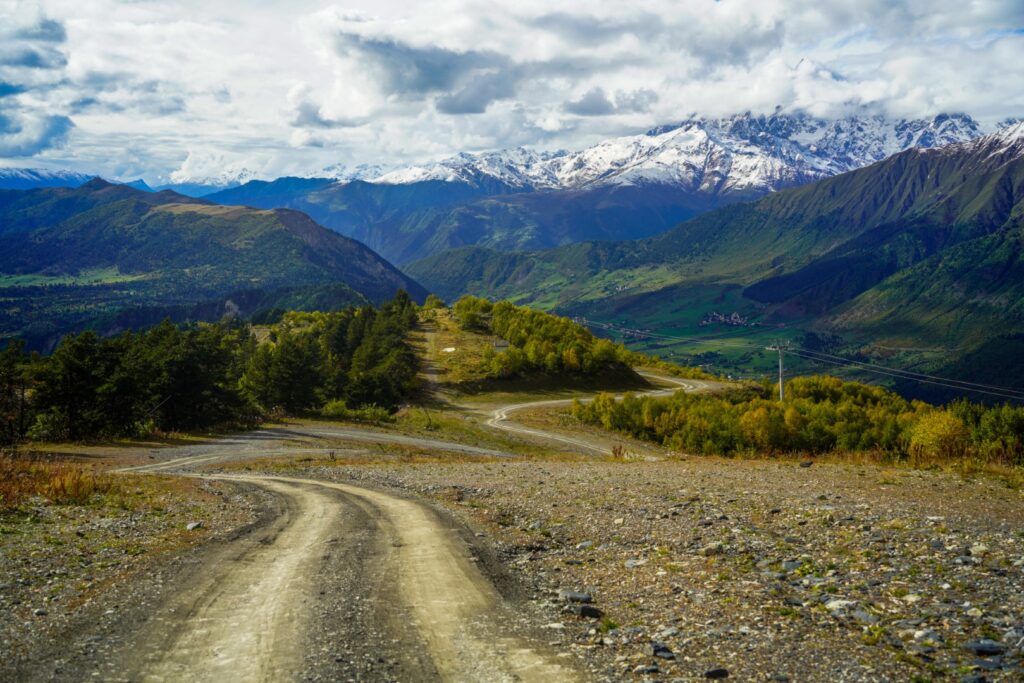
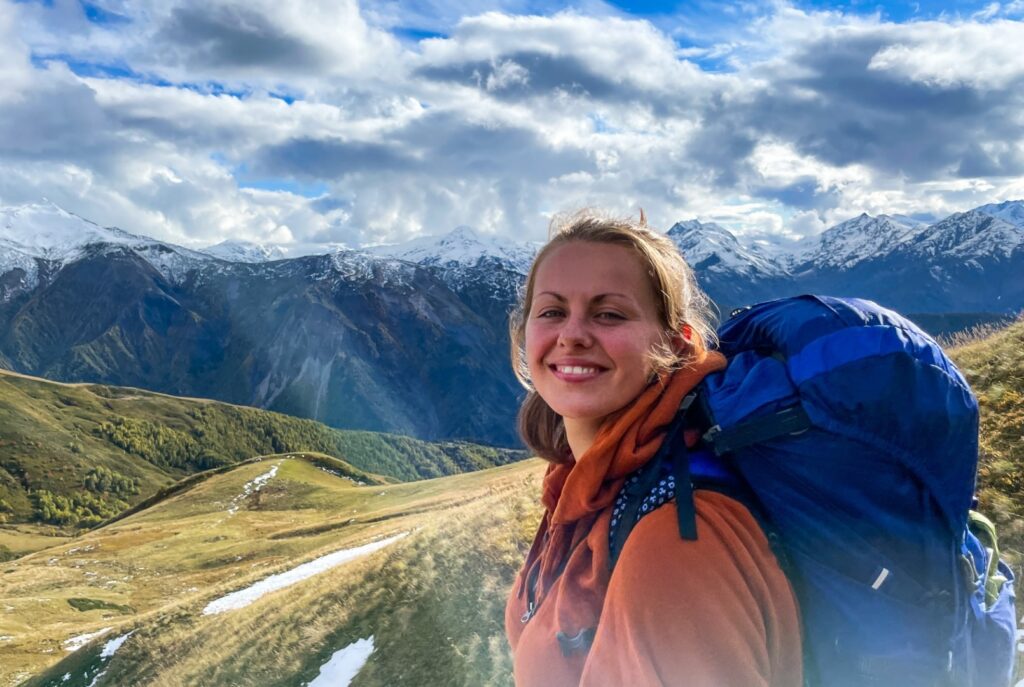
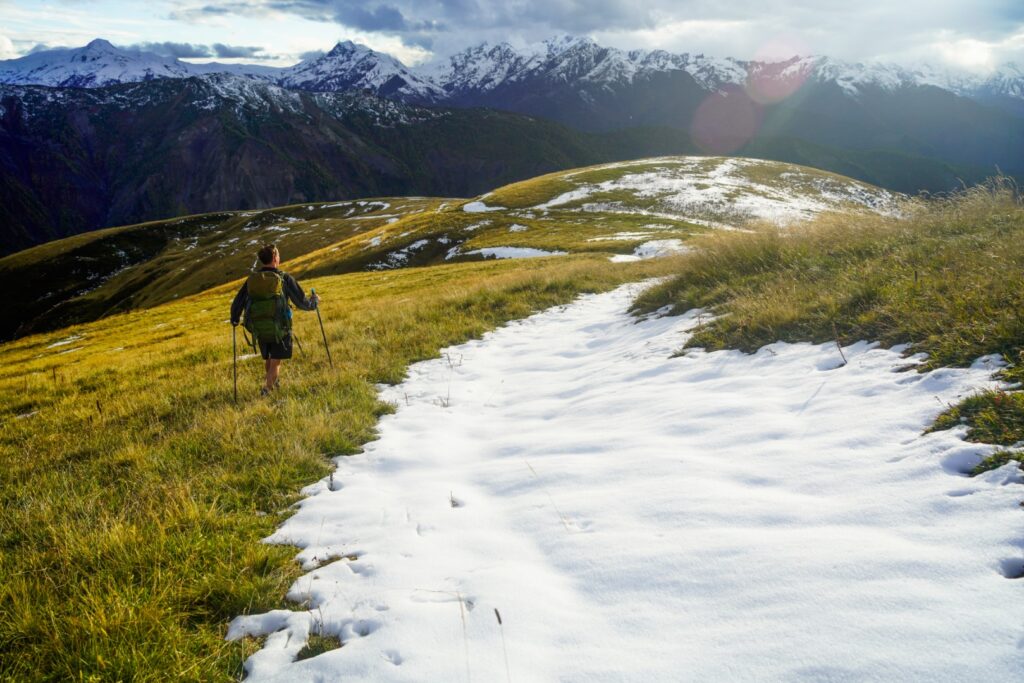
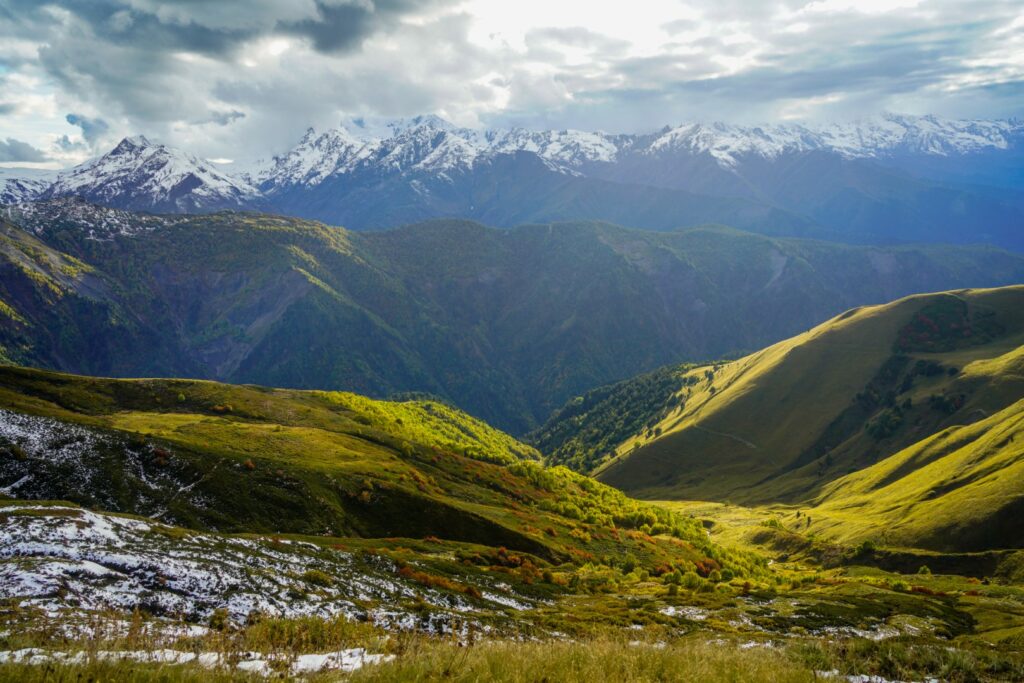
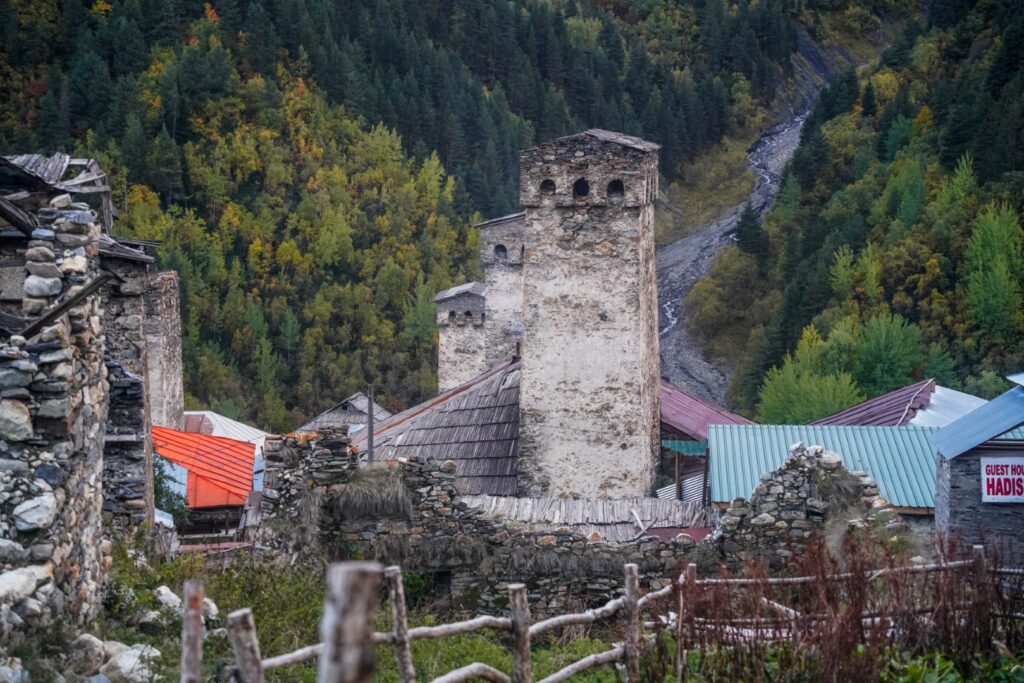
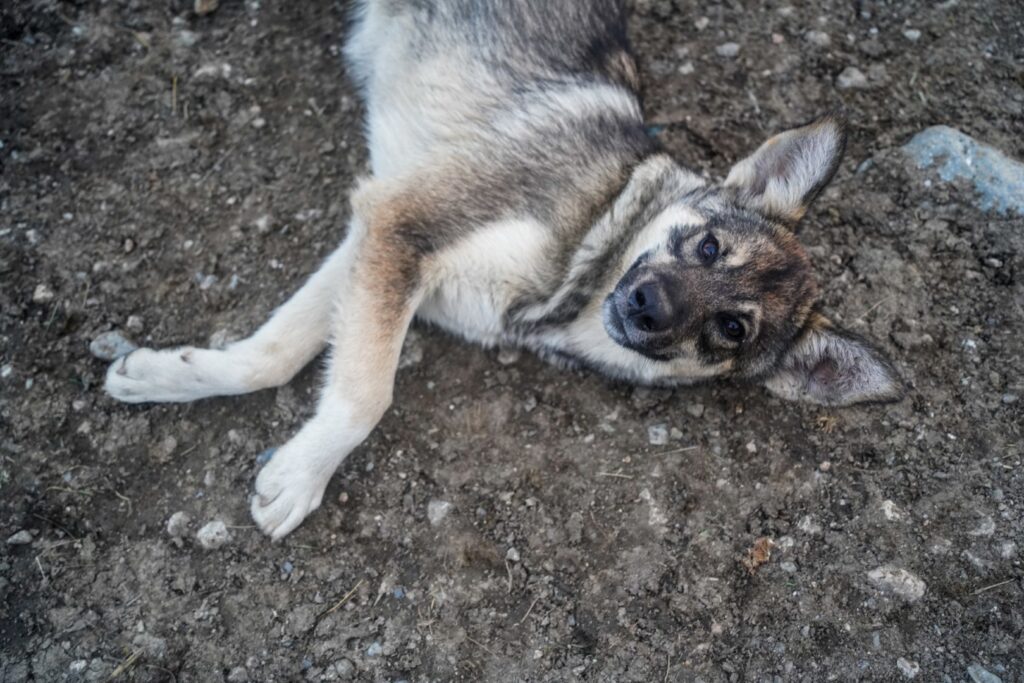
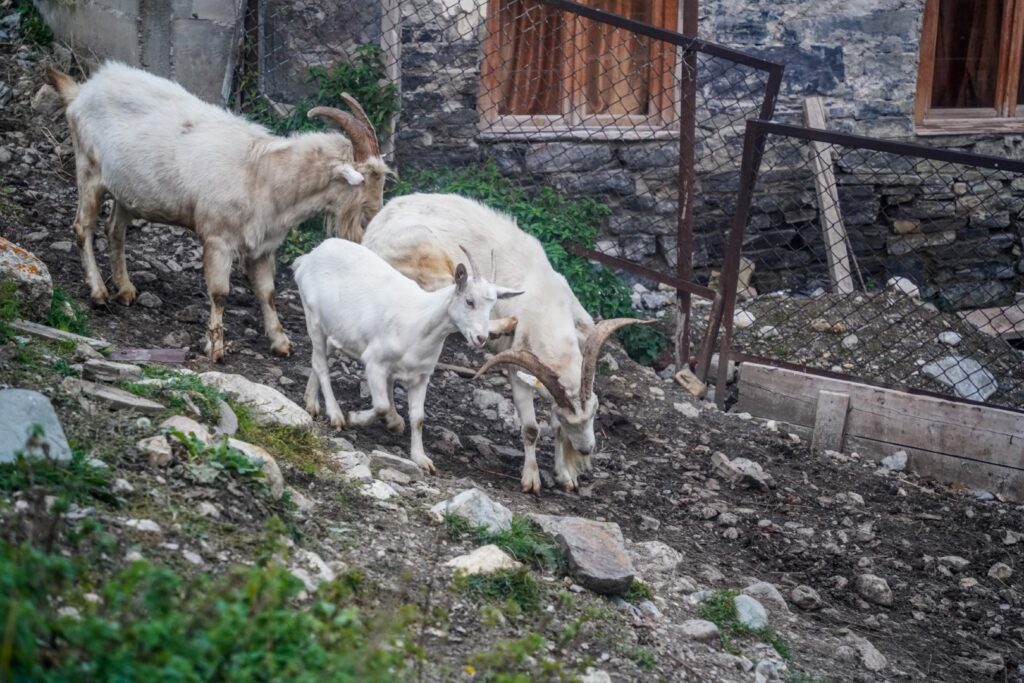
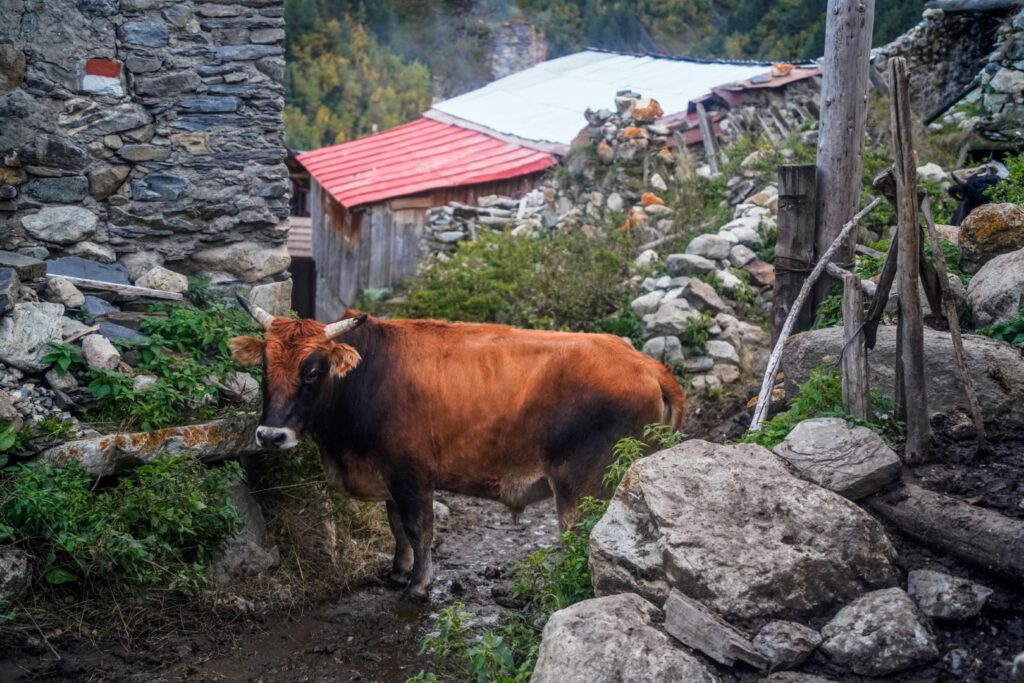
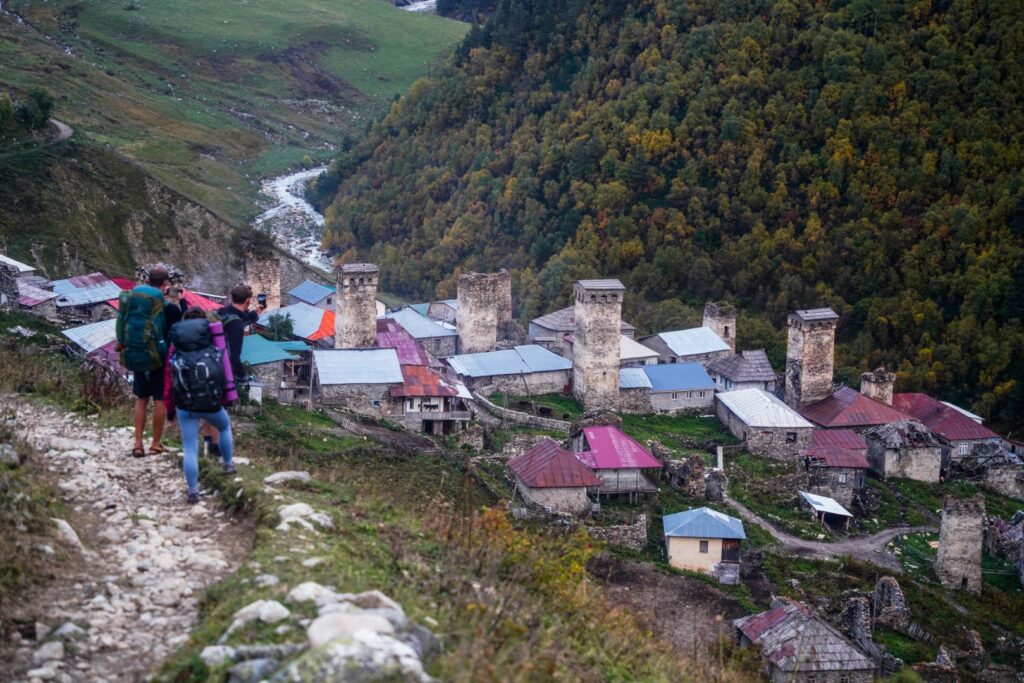
The next morning, we didn’t dilly-dally; we got up early as day three is known as the most difficult day of the trek. The leg is almost 19 kilometres long with an ascent of 860 metres and a descent of 1069 metres, as well as a difficult river crossing.
The first long part of the leg posed no challenge, though. For several kilometres, the trail stayed level yet still kept revealing new, gorgeous views. We picked fruits and berries along the way, and filled up our water bottles in clear streams. But then came the river crossing that we’d all feared. And for good reason. Local men were waiting with horses to help hikers cross, but they were charging 25 lari (or 8 USD) each, which is rather steep. Instead, we wanted to attempt to cross it ourselves. Trust me when I say it wasn’t easy. The current was strong, and the water freezing cold, but with the help of two hiking sticks and a lot of courage, we did all manage to get across! Afterwards, we sat down for a well-deserved lunch, featuring patifu from the Czech Republic, which I have since become a little bit addicted to!
The ascent started immediately after the river crossing, and we were joined by two other hikers with whom we played a bunch of silly games, taking our mind of the rather tough ascent to the Chkhunderi pass (2,655 m). This part of the leg was tough, but we were rewarded with incredible views of the Adishi glacier. We could even hear the sound of the glacier moving, but it was soon replaced with the sound of rain, which lasted for a few moments.
After the long ascent, the descent towards our last overnight stop on the trek, the village of Iprari, began. We hiked past abandoned wooden huts and the village of Khalde, which also seemed to be mostly in ruins. Around 6 PM, an hour or so before sunset, we reached Iprari! Along with our new hiking buddies, we stayed in a cozy guesthouse and had a fun evening with lots of food and sharing of stories!
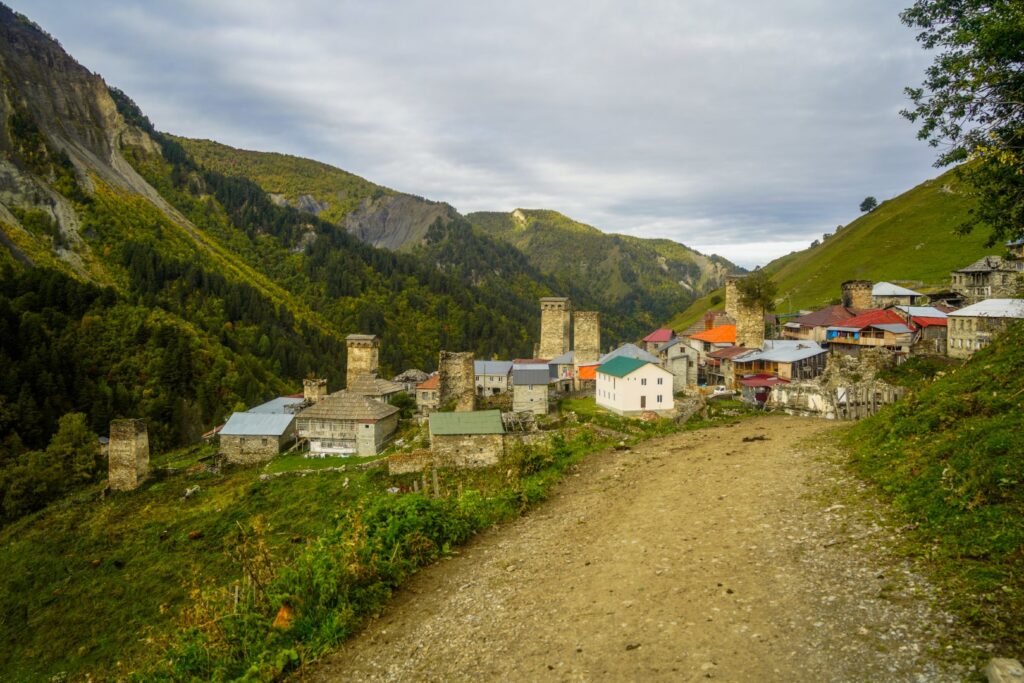
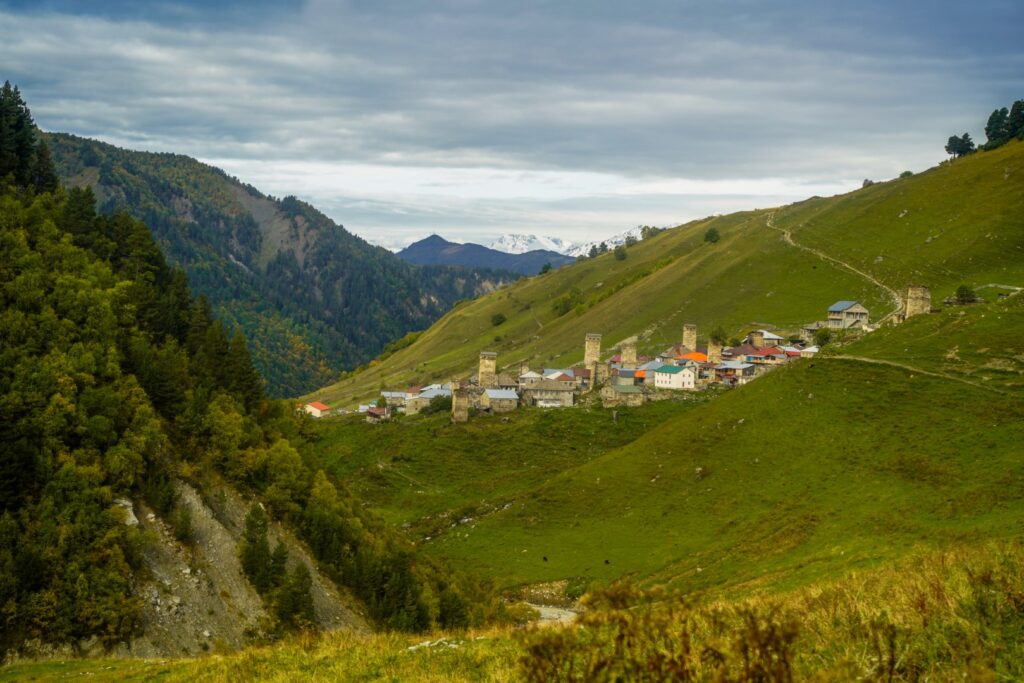
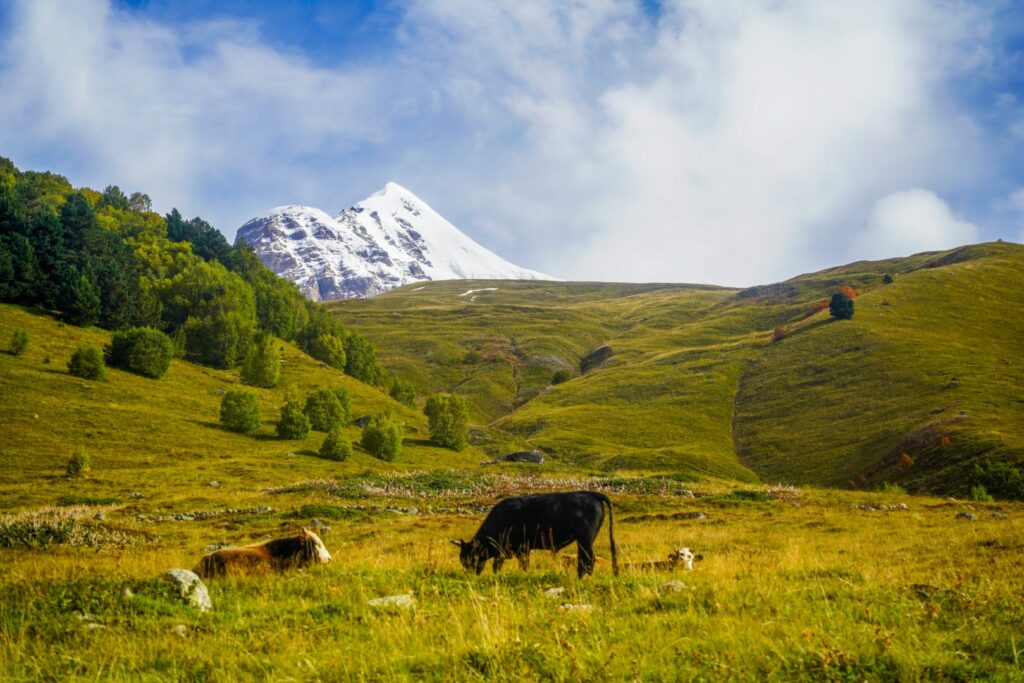
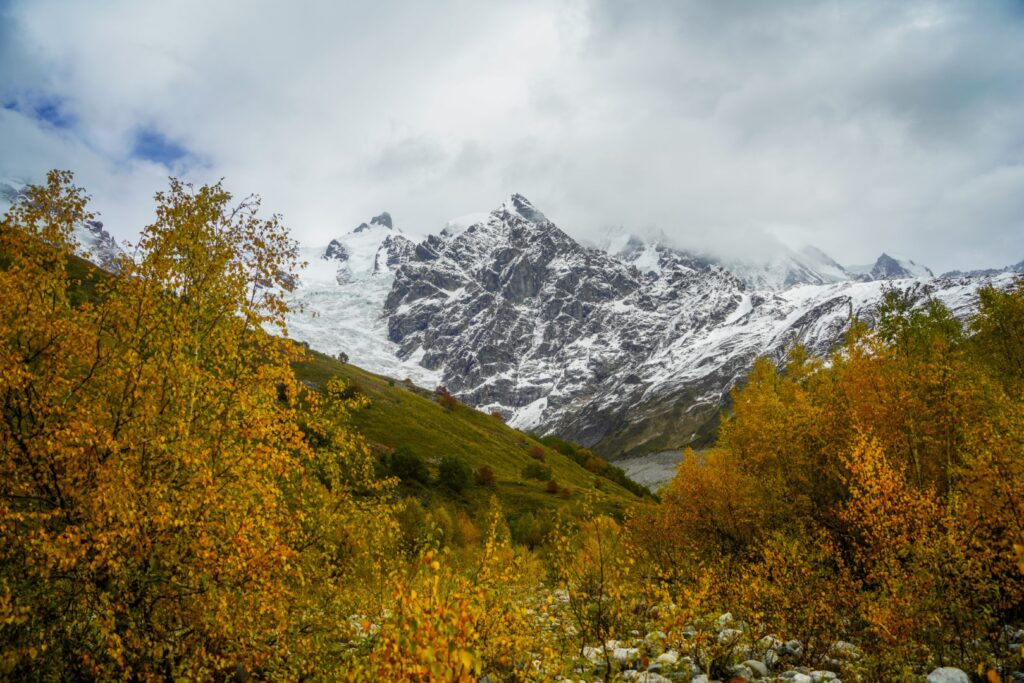
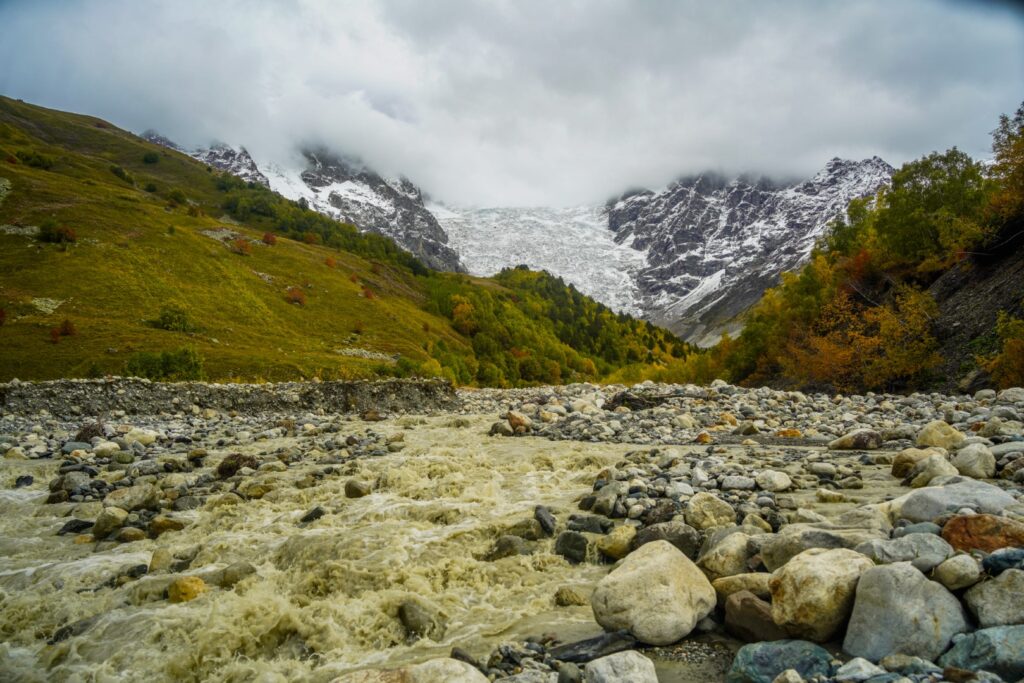
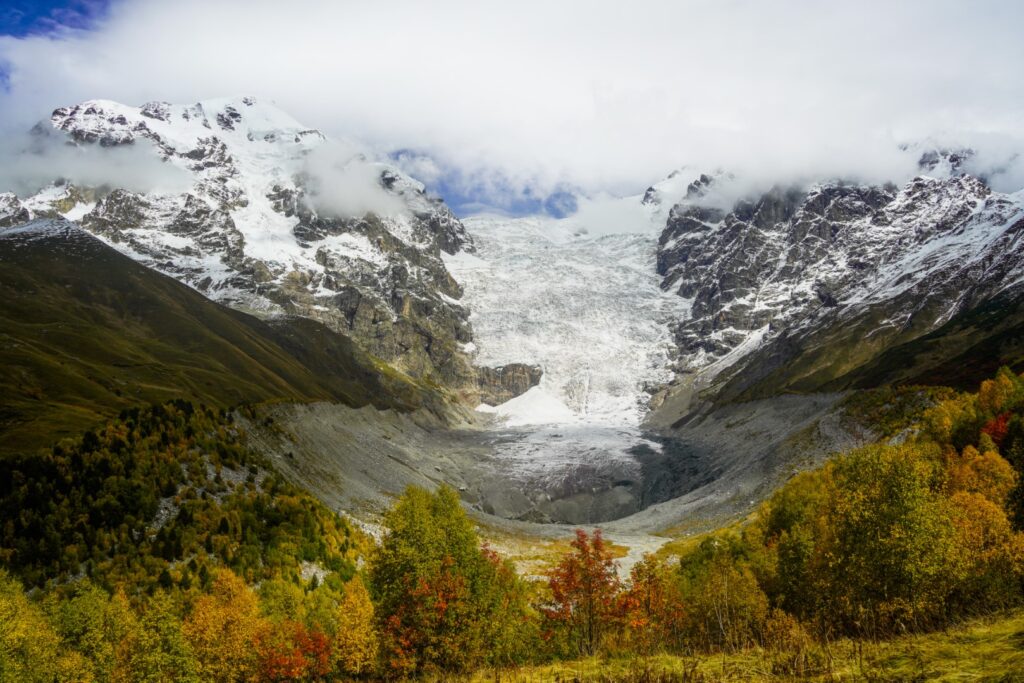
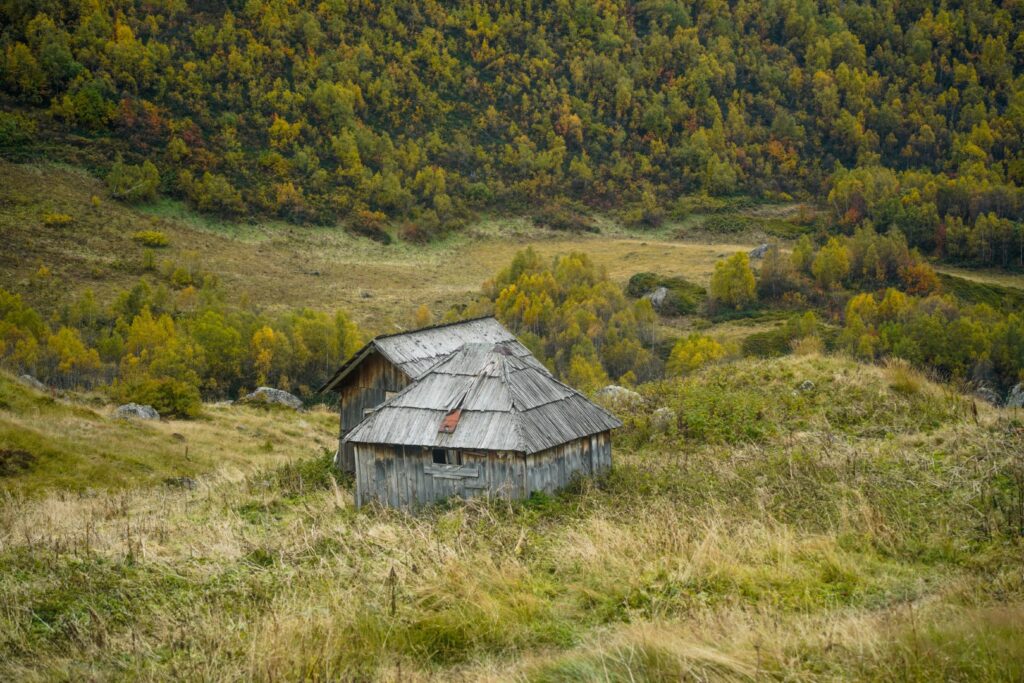
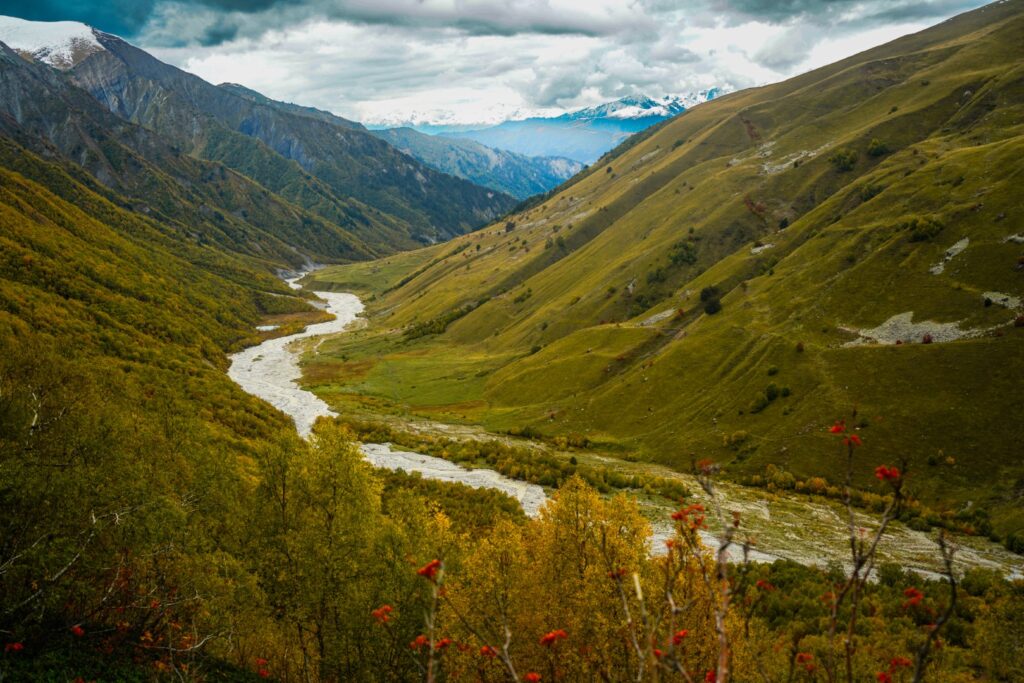
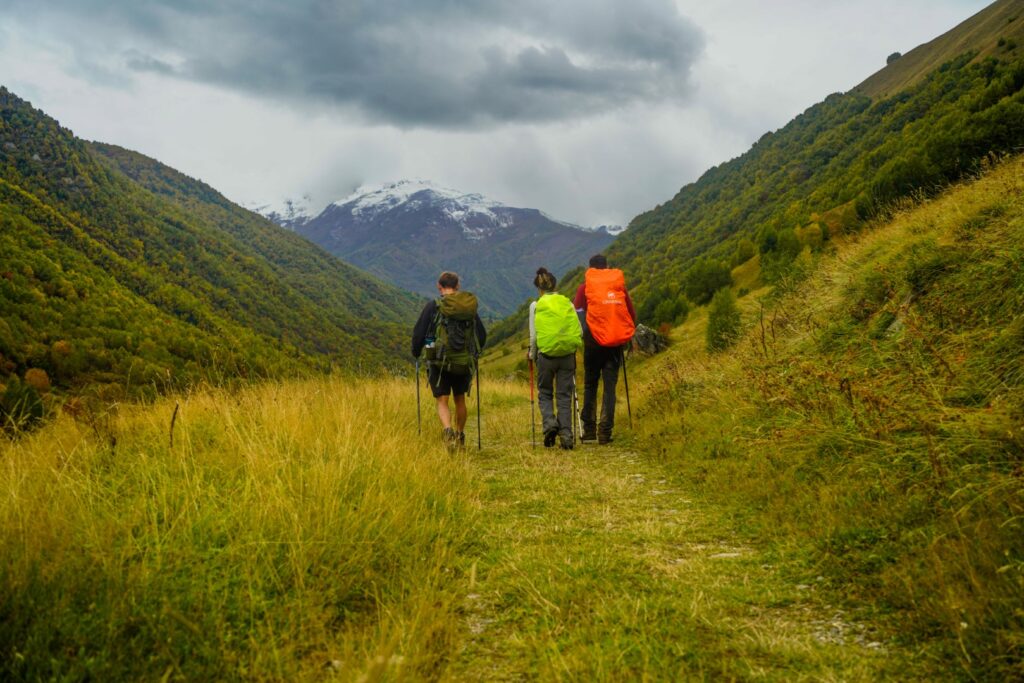
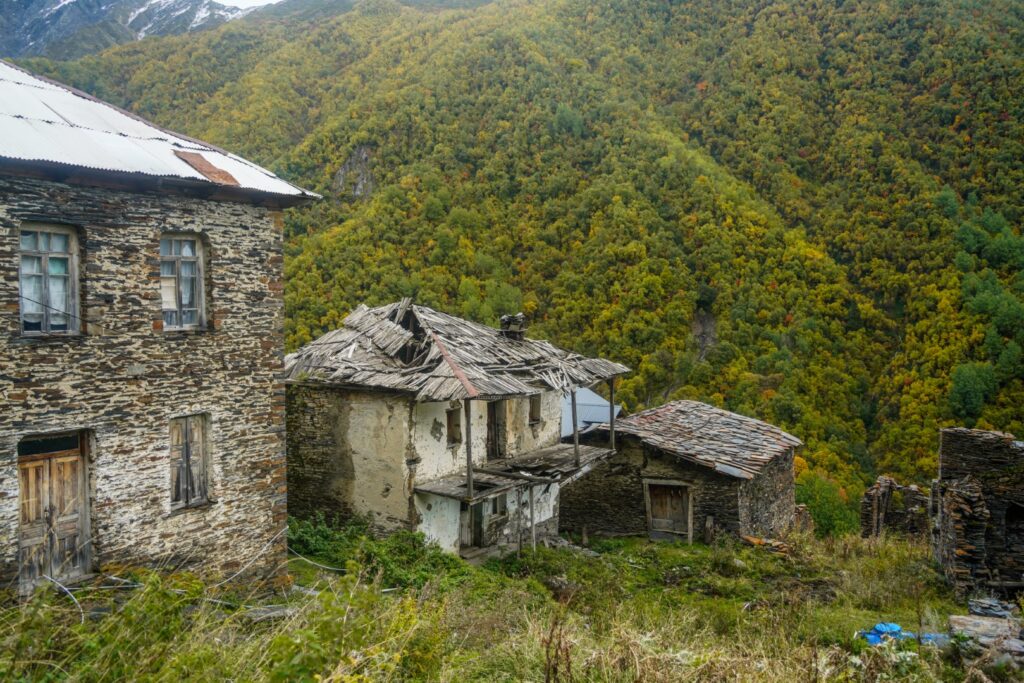
Unfortunately, our trek ended in Iprari as there was a landslide on the road to Ushguli the night before we were supposed to go there. The landslide did not affect the trail, but it would leave us stranded in the village with no way of getting back to Mestia. Since two of us had upcoming flights, we didn’t have time to wait it out, as much as we wanted to.
This meant that we had to miss out the last day of the trek, which is usually a short four-day hike to Ushguli. It also meant missing out on this village which, by many, is said to be the prettiest in the region. It was a difficult decision to make, but in the end, we decided it was better to return to Mestia. However, we didn’t have any luck finding a taxi to get back. So we started walking along the highway, hoping to flag one down. We were able to hitch a ride for six kilometres, and then continued walking. We walked and walked for 2,5 hours, and there were no cars. I guess they were all stuck in Ushguli due to the landslide. It wasn’t even a scenic walk to make up for it, but we did have one experience that I’ve since cherished. Shortly before reaching Iprari, we came past a Svan tower called “the Tower of Love”, which is open for visitors for just 1 lari. So at least I got to climb a Svan tower before leaving the region! The lady who worked at the tower kindly called us a taxi so we could finally get away from the highway and back to civilization!
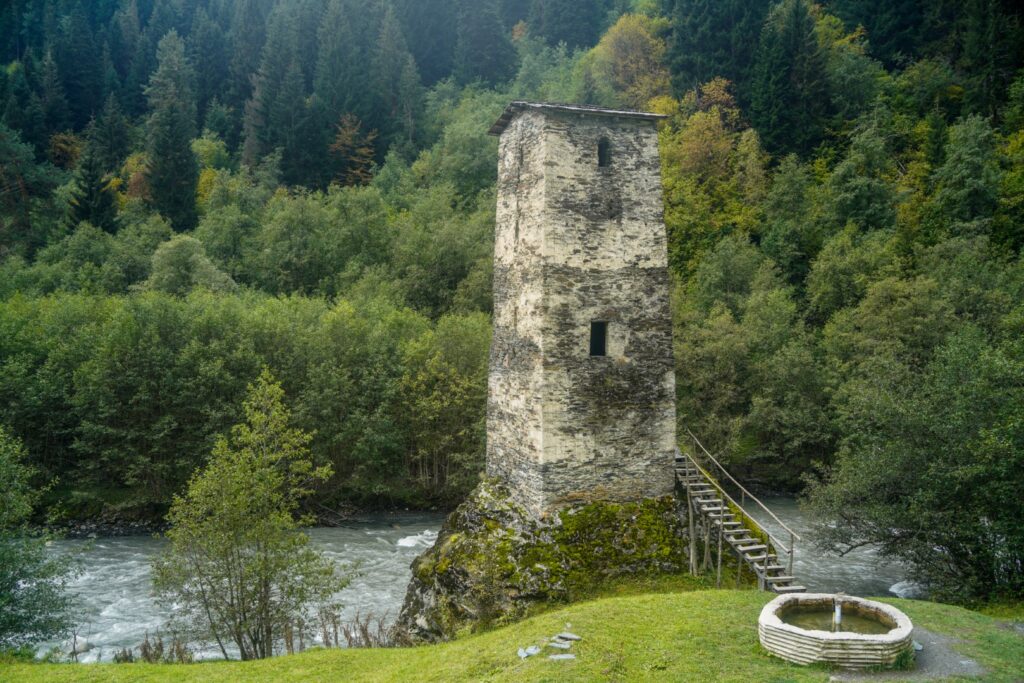
Upon reaching Mestia, we were all incredibly hungry, so we immediately found a restaurant and ordered an abundance of Georgian food. We then jumped on a mini-bus and drove all the way to the city of Kutaisi to stay at Dingo Backpackers Hostel for one last night!
It still stings that I didn’t get to complete the hike and experience Ushguli, but maybe someday, I’ll be back. I hope so, because I don’t feel that I’m done with neither Svaneti nor Georgia as a whole!
Looking for guidelines on how to trek from Mestia to Ushguli? This guide by Caucasus Trekking is the best I’ve come across, and I also used it for my trek!
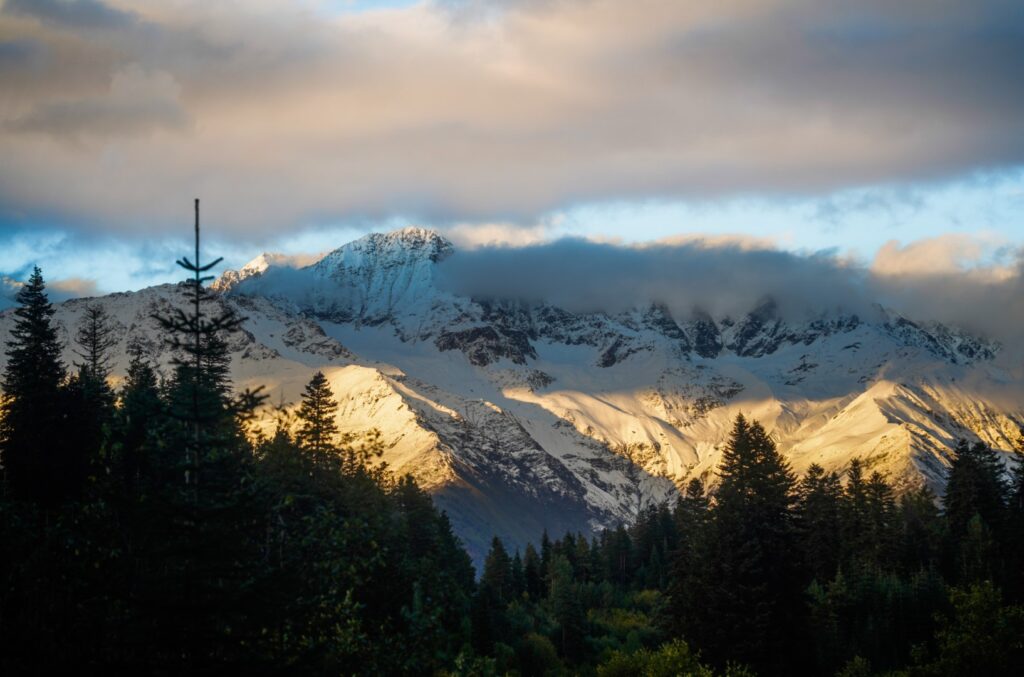
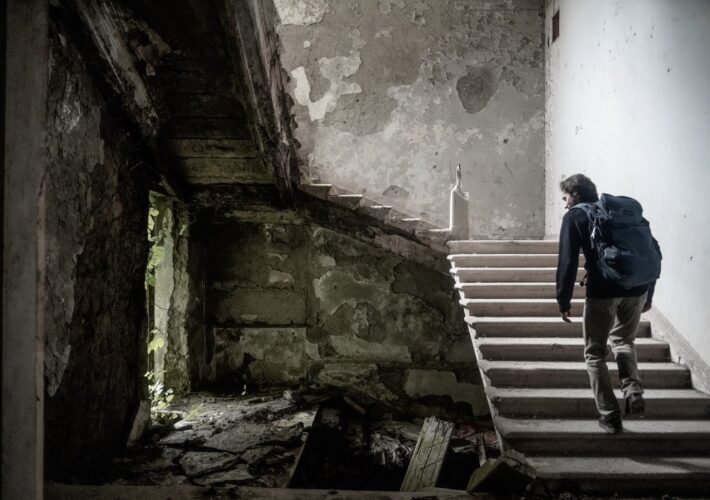

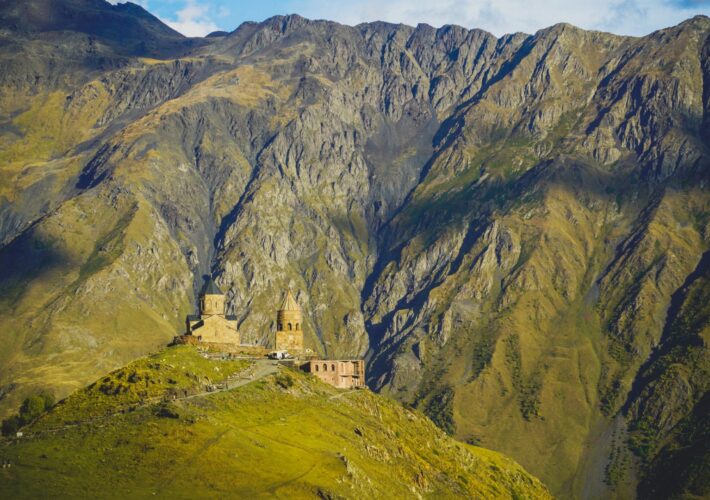
Leave a Comment